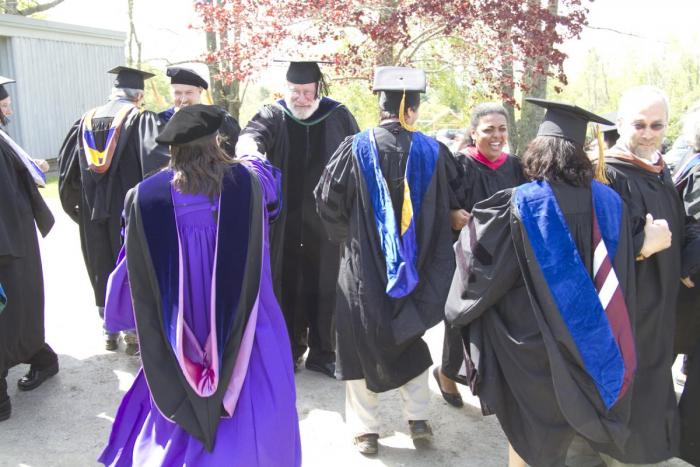Summer 2012
Editor’s note
If you are a college student, 65 years seems like a long time. But for a college it is just old enough to be past the angst and uncertainty of youth and into the considered confidence of a seasoned institution. This year, Marlboro is celebrating that milestone in many ways, most notably with our alumni reunion in May. In this issue of Potash Hill you can see some photos from that reunion, read what President Ellen McCulloch-Lovell has to say about innovation and find out what some alumni learned about learning at Marlboro.
With articles coming from many perspectives and disciplines, this issue bolsters the contention that time is relative, as well as precious. Commencement speaker Bill McKibben, the noted author and environmental activist, says that the earth has crossed a threshold to a new era of climatic instability in just the last couple decades. Alumnus Will Brooke-deBock puts a modern spin on Marxist theory, and writing professor Kyhl Lyndgaard shows how history was unkind to both Native Americans and native orchids. Recent graduate Trevor Bowen illustrates how time and providence stand between something called a coronal mass ejection and technological disaster. As always, I welcome your responses and ideas, both relative and absolute, for future issues.
–Philip Johansson, editor
Taking Off the Moccasin Flower and Putting On the Lady’s Slipper
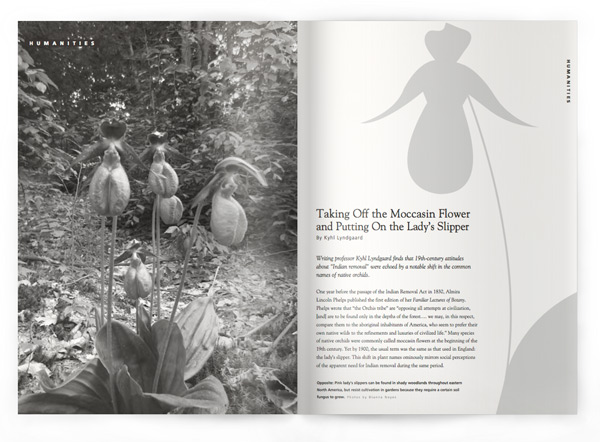
By Kyhl Lyndgaard
Writing professor Kyhl Lyndgaard finds that 19th-century attitudes about “Indian removal” were echoed by a notable shift in the common names of native orchids.
One year before the passage of the Indian Removal Act in 1830, Almira Lincoln Phelps published the first edition of her Familiar Lectures of Botany. Phelps wrote that “the Orchis tribe” are “opposing all attempts at civilization, [and] are to be found only in the depths of the forest…. we may, in this respect, compare them to the aboriginal inhabitants of America, who seem to prefer their own native wilds to the refinements and luxuries of civilized life.” Many species of native orchids were commonly called moccasin flowers at the beginning of the 19th century. Yet by 1900, the usual term was the same as that used in England: the lady’s slipper. This shift in plant names ominously mirrors social perceptions of the apparent need for Indian removal during the same period.
The ways white Americans wrote about moccasin flowers during the 19th century—and the ways this earlier name slowly fell from common usage—illustrate how Indian removal was rationalized based on changes in the landscape. The moccasin flower was routinely used as a symbol representing Native Americans in discourse on federal policies of Indian removal. This selective use of botanical information allowed political sentiment about Indian removal to have an undue factual basis in nature study, and often led to the unwitting complicity of progressive writers.
William Cullen Bryant used his editorship at the New-York Evening Post as a platform to editorialize in support of parks and conservation, but nonetheless supported President Andrew Jackson’s Indian Removal Act. Bryant’s poetry often draws upon flowers, including the moccasin flower, to symbolize not only death in general, but also the inevitable extinction of Native American culture. In “The Maiden’s Sorrow” (1842), Bryant writes,
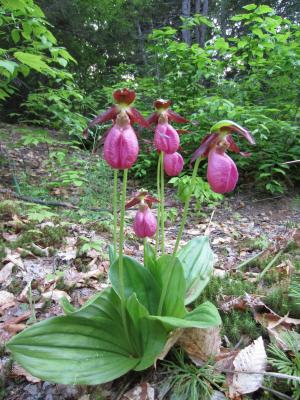 Far on the prairies of the west,
Far on the prairies of the west,
None who loved thee beheld thee die;
They who heaped the earth on thy breast
Turned from the spot without a sigh.
There, I think, on that lonely grave,
Violets spring in the soft May shower;
There, in the summer breezes wave
Crimson phlox and moccasin flower.
Bryant’s poetry suggests that Native Americans are already relegated to exile. His contemporary audience readily understood the many contemporary references and social attitudes in his writing.
In a later example, Susan Fenimore Cooper made a valuable comparison between weeds and native flowers in Rural Hours (1850):
The wild natives of the woods grow there willingly, while many strangers, brought originally from over the Ocean, steal gradually onward from the tilled fields and gardens, until at last they stand side by side upon the same bank, the European weed and the wild native flower.
These foreign intruders are a bold and hardy race, driving away the prettier natives. It is frequently remarked by elderly persons familiar with the country, that our own wild flowers are very much less common than they were forty years since…. The moccasin-flower abounded formerly even within the present limits of the village.
Cooper opens this passage by linking disturbed ground to the ability of weeds to take hold where native plants formerly made up the entire population. She specifies that the weeds are European, and constitute a “bold and hardy race” that continues to displace the native population. Cooper claims that this is a “mingled society” in which examples of both European and North American origins can potentially “stand side by side.” The inevitability of Indian removal is not a foregone conclusion for her, despite the elegiac nature of her father’s novel Last of the Mohicans.
Fascinating corollaries were developed in response to the increasing scarcity of native orchids as the 19th century progressed. Some argued that the moccasin flower could be domesticated, a claim connected to the opening of the first Indian boarding schools. Laura Sanford explained in an 1891 horticultural article that “if we are to possess the representatives of this fair and fascinating race, which belong to us as the native offspring of American soil, we must guard them from destruction in their favorite haunts.” Words such as “possess” support assimilation as a perceived necessity. Sanford also expresses a newly found romantic pride in America’s native populations. Her article is conspicuously devoid of words identifying the subject as a plant and could be mistaken for the words of progressive reformers. Sanford ultimately asserts that the moccasin flower dies from “homesickness” after a year or two. As seen by death rates upon removal to reservations or boarding schools, Native Americans also suffered terribly upon the loss of their homes.
Still, this argument found favor with writers who were sympathetic to Native Americans and reluctantly felt that assimilation was the best hope for ensuring human rights. Lydia Maria Child contrasted wildflowers with domestic plants to grapple with questions of Indian removal. Her short story “Willie Wharton” examines the life of a boy who was taken captive by Indians and returned later in life to his biological family with a Native American bride. His well-meaning family, while they give space to the couple to assimilate, compare plants to ethnic groups. Child writes that “the wild-flowers of the prairie were supplanted by luxuriant fields of wheat and rye,” while the character Uncle George remarks that Willie’s native bride is as “‘bright as the torch-flower of the prairies’” and that “‘wild-flowers, as well as garden-flowers, grow best in the sunshine.’” Child—and many other progressive and transcendentalist writers—promoted assimilation through flower analogies.
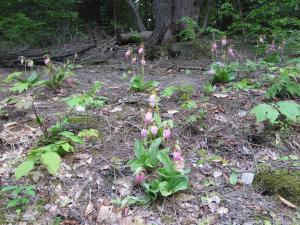 Elaine Goodale Eastman’s 52-line poem “Moccasin Flower” includes lines pointing to a more nuanced relationship among whites, Native Americans and native orchids:
Elaine Goodale Eastman’s 52-line poem “Moccasin Flower” includes lines pointing to a more nuanced relationship among whites, Native Americans and native orchids:
Yet shy and proud among the forest flowers,
In maiden solitude,
Is one whose charm is never wholly ours,
Nor yielded to our mood:
One true-born blossom, native to our skies,
We dare not claim as kin,
Nor frankly seek, for all that in it lies,
The Indian’s moccasin.
Eastman describes in code the tension between North American inhabitants at the time. Published in the well-received poetry collection In Berkshire with the Wildflowers (1879) when Eastman was only 16, the poem clearly articulates the resistance of the “native,” rather than relying upon the more common theme of vanishing. At this point in the poem Eastman pivots slightly, spending the next 10 lines on the difficulties of finding the moccasin flower. She ends the poem on a strange note:
With careless joy we thread the woodland ways
And reach her broad domain.
Thro’ sense of strength and beauty, free as air,
We feel our savage kin,—
And thus alone with conscious meaning wear
The Indian’s moccasin!
In these final lines of the poem, Eastman places the writer—and reader—in the shoes of Native Americans. The “careless” quality of the poem’s joy suggests an irresponsible hope to escape civilization. After first claiming the moccasin flower is off-limits, Eastman is strangely unable to stop herself from completing the journey. Her own life followed a fascinating parallel with this poem: she taught Native American children in South Dakota, marrying Charles Eastman shortly after assisting him in nursing the victims of the Wounded Knee Massacre. Elaine likely made significant contributions to Charles’ books, which include Indian Boyhood.
Writing at the end of the 19th century, Mabel Osgood Wright expressed regret over these changes to the land and its native inhabitants: “Ladies’ Slipper is not a word in keeping with Hemlock and Beech woods, but the word Moccasin throws meaning into the black shadows and brings to mind the stone axe and flint arrow-heads found not long ago.” When Wright spies a moccasin flower along a roadside, she picks it, but only because of worries that someone else will see it and “follow the trail into the woods, and make the whole colony prisoners.” While Wright’s knowledge of Native American culture is somewhat superficial, she is insistent on the importance of local knowledge. Wright argues to keep the name moccasin flower, stating that when “a common name, spicy with the odor of the new western world, is given to a plant, I think we should keep it…and call our little group of inflated pouched Orchids, Moccasin Flowers, instead of Ladies’ Slippers, as Britton does, a general title which confuses their personalities with the European species.” However, her argument is belated, as the common name of lady’s slipper had by then all but supplanted the earlier usage of moccasin flower.
Despite persisting worries about captivity on the frontier, by the end of the 19th century native orchids with slipper-shaped pouches were commonly called lady’s slippers, rather than moccasin flowers. The removal of Native Americans from lands that white settlers desired—especially those east of the Mississippi, which correspond with the primary natural range of these orchids—was all but complete. Nonetheless, a more positive parallel may be made today: Native Americans were and are still very much present, as are many species of moccasin flowers, despite relentless attempts to destroy, displace and domesticate. A final example that explains why using moccasin flowers as a symbol for Native Americans was a problem can be plucked from Child’s prologue to “Willie Wharton.” She writes: “Would you like to read a story which is true, and yet not true? The one I am going to tell you is a superstructure of imagination on a basis of facts.”
Kyhl Lyndgaard teaches writing at Marlboro, with a focus on environmental studies and literature. He is working on an anthology of essays, fiction and poetry tentatively entitled Currents of the Universal Being: Explorations in the Literature of Energy.
The essence of orchids
 While orchids symbolize changing attitudes for Kyhl, they quite literally changed the life and livelihood of Don Dennis ’82. After moving to England and trying a sustainable timber business, Don began importing flower essences for healing purposes. “One of our early suppliers was a woman in California who was making essences with orchids grown in her greenhouse,” said Don, who now lives in Scotland and is the author of Orchid Essence Healing. “Like T. Wilson with poetry, or Audrey Gorton with Shakespeare, this woman communicated a tremendous passion for her subject: it was then that orchids caught my notice for the first time.” Don bought his first small orchid (a Phragmipedium hanne popow), and this led to a second, and soon he had to build a greenhouse to house them all. Visit www.healingorchids.com to learn more. Photo: Fruits of love orchid, by Don Dennis
While orchids symbolize changing attitudes for Kyhl, they quite literally changed the life and livelihood of Don Dennis ’82. After moving to England and trying a sustainable timber business, Don began importing flower essences for healing purposes. “One of our early suppliers was a woman in California who was making essences with orchids grown in her greenhouse,” said Don, who now lives in Scotland and is the author of Orchid Essence Healing. “Like T. Wilson with poetry, or Audrey Gorton with Shakespeare, this woman communicated a tremendous passion for her subject: it was then that orchids caught my notice for the first time.” Don bought his first small orchid (a Phragmipedium hanne popow), and this led to a second, and soon he had to build a greenhouse to house them all. Visit www.healingorchids.com to learn more. Photo: Fruits of love orchid, by Don Dennis
Weathering Solar Storms
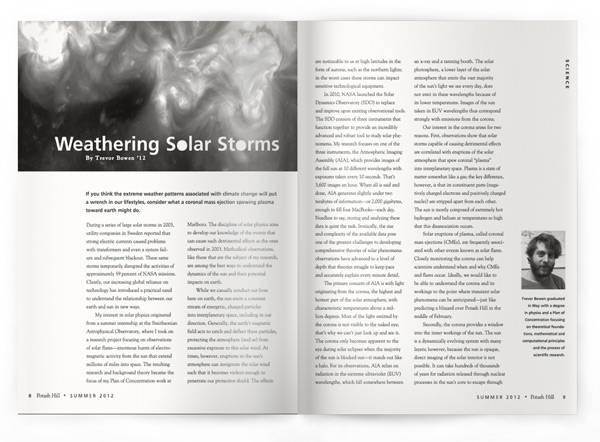
By Trevor Bowen ‘12
If you think the extreme weather patterns associated with climate change will put a wrench in our lifestyles, consider what a coronal mass ejection spewing plasma toward earth might do.
During a series of large solar storms in 2003, utility companies in Sweden reported that strong electric currents caused problems with transformers and even a system failure and subsequent blackout. These same storms temporarily disrupted the activities of approximately 59 percent of NASA missions. Clearly, our increasing global reliance on technology has introduced a practical need to understand the relationship between our earth and sun in new ways.
My interest in solar physics originated from a summer internship at the Smithsonian Astrophysical Observatory, where I took on a research project focusing on observations of solar flares—enormous bursts of electromagnetic activity from the sun that extend millions of miles into space. The resulting research and background theory became the focus of my Plan of Concentration work at Marlboro. The discipline of solar physics aims to develop our knowledge of the events that can cause such detrimental effects as the ones observed in 2003. Methodical observations, like those that are the subject of my research, are among the best ways to understand the dynamics of the sun and their potential impacts on earth.
 While we casually conduct our lives here on earth, the sun emits a constant stream of energetic, charged particles into interplanetary space, including in our direction. Generally, the earth’s magnetic field acts to catch and deflect these particles, protecting the atmosphere (and us) from excessive exposure to this solar wind. At times, however, eruptions in the sun’s atmosphere can invigorate the solar wind such that it becomes violent enough to penetrate our protective shield. The effects are noticeable to us at high latitudes in the form of auroras, such as the northern lights; in the worst cases these storms can impact sensitive technological equipment.
While we casually conduct our lives here on earth, the sun emits a constant stream of energetic, charged particles into interplanetary space, including in our direction. Generally, the earth’s magnetic field acts to catch and deflect these particles, protecting the atmosphere (and us) from excessive exposure to this solar wind. At times, however, eruptions in the sun’s atmosphere can invigorate the solar wind such that it becomes violent enough to penetrate our protective shield. The effects are noticeable to us at high latitudes in the form of auroras, such as the northern lights; in the worst cases these storms can impact sensitive technological equipment.
In 2010, NASA launched the Solar Dynamics Observatory (SDO) to replace and improve upon existing observational tools. The SDO consists of three instruments that function together to provide an incredibly advanced and robust tool to study solar phenomena. My research focuses on one of the three instruments, the Atmospheric Imaging Assembly (AIA), which provides images of the full sun at 10 different wavelengths with exposures taken every 10 seconds. That’s 3,600 images an hour. When all is said and done, AIA generates slightly under two terabytes of information—or 2,000 gigabytes, enough to fill four MacBooks—each day. Needless to say, storing and analyzing these data is quite the task. Ironically, the size and complexity of the available data pose one of the greatest challenges to developing comprehensive theories of solar phenomena: observations have advanced to a level of depth that theories struggle to keep pace and accurately explain every minute detail.
The primary concern of AIA is with light originating from the corona, the highest and hottest part of the solar atmosphere, with characteristic temperatures above a million degrees. Most of the light emitted by the corona is not visible to the naked eye; that’s why we can’t just look up and see it. The corona only becomes apparent to the eye during solar eclipses when the majority of the sun is blocked out—it stands out like a halo. For its observations, AIA relies on radiation in the extreme ultraviolet (EUV) wavelengths, which fall somewhere between an x-ray and a tanning booth. The solar photosphere, a lower layer of the solar atmosphere that emits the vast majority of the sun’s light we see every day, does not emit in these wavelengths because of its lower temperatures. Images of the sun taken in EUV wavelengths thus correspond strongly with emissions from the corona.
 Our interest in the corona arises for two reasons. First, observations show that solar storms capable of causing detrimental effects are correlated with eruptions of the solar atmosphere that spew coronal “plasma” into interplanetary space. Plasma is a state of matter somewhat like a gas; the key difference, however, is that its constituent parts (negatively charged electrons and positively charged nuclei) are stripped apart from each other. The sun is mostly composed of extremely hot hydrogen and helium at temperatures so high that this disassociation occurs.
Our interest in the corona arises for two reasons. First, observations show that solar storms capable of causing detrimental effects are correlated with eruptions of the solar atmosphere that spew coronal “plasma” into interplanetary space. Plasma is a state of matter somewhat like a gas; the key difference, however, is that its constituent parts (negatively charged electrons and positively charged nuclei) are stripped apart from each other. The sun is mostly composed of extremely hot hydrogen and helium at temperatures so high that this disassociation occurs.
Solar eruptions of plasma, called coronal mass ejections (CMEs), are frequently associated with other events known as solar flares. Closely monitoring the corona can help scientists understand when and why CMEs and flares occur. Ideally, we would like to be able to understand the corona and its workings to the point where transient solar phenomena can be anticipated—just like predicting a blizzard over Potash Hill in the middle of February.
Secondly, the corona provides a window into the inner workings of the sun. The sun is a dynamically evolving system with many layers; however, because the sun is opaque, direct imaging of the solar interior is not possible. It can take hundreds of thousands of years for radiation released through nuclear processes in the sun’s core to escape through its surface. Thus, scientists have historically had to work backwards from observations of the solar surface and atmosphere to study the nature of those interior physical processes. Our understanding of the solar magnetic field, for example, is primarily built on observations of the solar surface.
Magnetic fields are the primary culprits in most solar activity, and particularly relevant to our discussion of coronal eruptions. Essentially, the interior of the sun is made of free charged particles, or plasma as mentioned above. Like the earth, the sun rotates on its axis; accordingly, this rotation requires the motion of a huge mass of charged particles. One of the first principles in dealing with magnetism is that moving charges create magnetic fields. In the case of the sun, the massive amounts of moving charges create massive magnetic fields; this effect is called the solar dynamo. Over time, this magnetic field can bubble up through the solar surface into the atmosphere through convective processes—analogous to a single spaghetti noodle boiling up to the top of a pot of water.
 The catalyst for solar flares and CMEs is usually some sort of instability in the configuration of the magnetic field. In such cases, the magnetic field rapidly restructures itself to regain a stable footing, releasing immense amounts of energy in the process, which can in turn power a flare or CME. Understanding the physical conditions that lead up to eruptive events, such as the initial magnetic field configuration, is crucial to developing theories of these phenomena. Observations of the corona made by instruments like AIA make this science possible. Furthermore, these same observations provide a window into the workings of the solar interior, allowing for a complete and clear scientific narrative of our sun.
The catalyst for solar flares and CMEs is usually some sort of instability in the configuration of the magnetic field. In such cases, the magnetic field rapidly restructures itself to regain a stable footing, releasing immense amounts of energy in the process, which can in turn power a flare or CME. Understanding the physical conditions that lead up to eruptive events, such as the initial magnetic field configuration, is crucial to developing theories of these phenomena. Observations of the corona made by instruments like AIA make this science possible. Furthermore, these same observations provide a window into the workings of the solar interior, allowing for a complete and clear scientific narrative of our sun.
In early March 2012, we observed one of the largest flares to occur in the current solar cycle, certainly the largest since I have been collecting data. Associated with this flare was a significantly sized CME directed straight at earth, an event heralded by newspapers and other media that predicted disruptions to flights, GPS systems and power grids. Due to the magnetic orientation of the storm, the effects of the CME’s impact were minimized by earth’s magnetic field. However, this event demonstrates the reality of these eruptions and their potential impact on our world—in this case little more than a brief interruption in the weekly news cycle of a slow presidential primary season. If the magnetic field of the storm had been aligned slightly differently, the impact would have been quite noticeable.
Trevor Bowen graduated in May with a degree in physics and a Plan of Concentration focusing on theoretical foundations, mathematical and computational principles and the process of scientific research.
The art of programmed objects
 Aaron Evan-Browning ’12 used his Plan of Concentration to explore “the vocabularies of sculpture and computer science to make interactive objects.” “I see computer science more as a tool to make interesting things,” said Aaron. “I make things to satisfy my curiosity, to learn how things work and because I can’t help myself.” His impulsive creations resulted in a show in Drury Gallery that included, among other marvels, a set of computerized gnashing teeth and a children’s “Sing ‘n Smile Pals” toy, which he rewired in a process called circuit-bending to make sounds that would alarm most kids. Perhaps his most intriguing object is called “Eyebrow Switches,” a headband that creates seven different notes based on brow-bending facial expressions. “I have some of the best eyebrow control of anyone I know,” said Aaron.
Aaron Evan-Browning ’12 used his Plan of Concentration to explore “the vocabularies of sculpture and computer science to make interactive objects.” “I see computer science more as a tool to make interesting things,” said Aaron. “I make things to satisfy my curiosity, to learn how things work and because I can’t help myself.” His impulsive creations resulted in a show in Drury Gallery that included, among other marvels, a set of computerized gnashing teeth and a children’s “Sing ‘n Smile Pals” toy, which he rewired in a process called circuit-bending to make sounds that would alarm most kids. Perhaps his most intriguing object is called “Eyebrow Switches,” a headband that creates seven different notes based on brow-bending facial expressions. “I have some of the best eyebrow control of anyone I know,” said Aaron.
Winter Coat by Day: Student Poetry
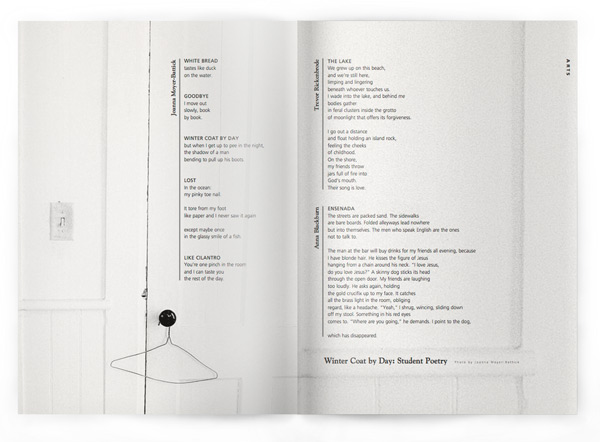
Joanna Moyer-Battick
 White Bread
White Bread
tastes like duck
on the water.
Goodbye
I move out
slowly, book
by book.
Winter Coat by Day
but when I get up to pee in the night,
the shadow of a man
bending to pull up his boots.
Lost
In the ocean:
my pinky toe nail.
It tore from my foot
like paper and I never saw it again
except maybe once
in the glassy smile of a fish.
Like Cilantro
You’re one pinch in the room
and I can taste you
the rest of the day.
Trevor Rickenbrode
The Lake
We grew up on this beach,
and we’re still here,
limping and lingering
beneath whoever touches us.
I wade into the lake, and behind me
bodies gather
in feral clusters inside the grotto
of moonlight that offers its forgiveness.
I go out a distance
and float holding an island rock,
feeling the cheeks
of childhood.
On the shore,
my friends throw
jars full of fire into
God’s mouth.
Their song is love.
Anna Blackburn
Ensenada
The streets are packed sand. The sidewalks
are bare boards. Folded alleyways lead nowhere
but into themselves. The men who speak English are the ones
not to talk to.
The man at the bar will buy drinks for my friends all evening, because
I have blonde hair. He kisses the figure of Jesus
hanging from a chain around his neck. “I love Jesus,
do you love Jesus?” A skinny dog sticks its head
through the open door. My friends are laughing
too loudly. He asks again, holding
the gold crucifix up to my face. It catches
all the brass light in the room, obliging
regard, like a headache. “Yeah,” I shrug, wincing, sliding down
off my stool. Something in his red eyes
comes to. “Where are you going,” he demands. I point to the dog,
which has disappeared.
Reflections: Seniors Exhibit Their Work
 Annie Malamet studied empowerment through the paintings of Sofonisba Anguissola, the Italian Renaissance artist, and prepared an exhibit of video art using martyr iconography to investigate themes of self-possession. “I use medieval and Renaissance martyr imagery to discuss issues of sexual violence and its place in the larger context of fine art as well as pop culture,” said Annie. “Borrowing iconography from paintings of Christian martyrs, I have re-created these images in the form of live-action vignettes.”
Annie Malamet studied empowerment through the paintings of Sofonisba Anguissola, the Italian Renaissance artist, and prepared an exhibit of video art using martyr iconography to investigate themes of self-possession. “I use medieval and Renaissance martyr imagery to discuss issues of sexual violence and its place in the larger context of fine art as well as pop culture,” said Annie. “Borrowing iconography from paintings of Christian martyrs, I have re-created these images in the form of live-action vignettes.”
Willie Finkel received a degree in American studies, with a focus on curatorial studies and ceramics. He complemented his study of the Civil War with an exhibit featuring art from Marlboro ceramics professors and students over the years, including his own, shown here. Willie said, “I believe that our relationship to happiness, joy and beauty can accentuate our understanding of the past just as much as tragedy and sadness. So I tried to harness one of those qualities, our sense of beauty, to connect people to the past.”
Zach Parks used visual arts and philosophy to investigate the links between machines, technology and art. “In my work, I aim to explore relationships, actions and attitudes both human and mechanical,” said Zach. “A machine is a collection of parts working together to perform some sort of action, but may also be considered a series of abstract functions, or a group of mechanical relationships from which the final action emerges.” This piece, called “Cranes,” was one of several in Zach’s Drury Gallery exhibition.
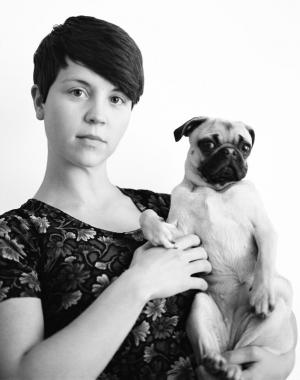 Nick Rouke, who received a degree in visual arts, explored concepts of time, loss and absence through photographic work, including a series of portraits of his fellow students. “Once I started to understand how I felt and accepted that I wouldn’t ever be able to answer some questions, I started making work that was more a reflection of my perspective rather than dramatic statements that are trying too hard to be profound declarations of truth,” said Nick.
Nick Rouke, who received a degree in visual arts, explored concepts of time, loss and absence through photographic work, including a series of portraits of his fellow students. “Once I started to understand how I felt and accepted that I wouldn’t ever be able to answer some questions, I started making work that was more a reflection of my perspective rather than dramatic statements that are trying too hard to be profound declarations of truth,” said Nick.
Unalienated Labor and the Gameful Life
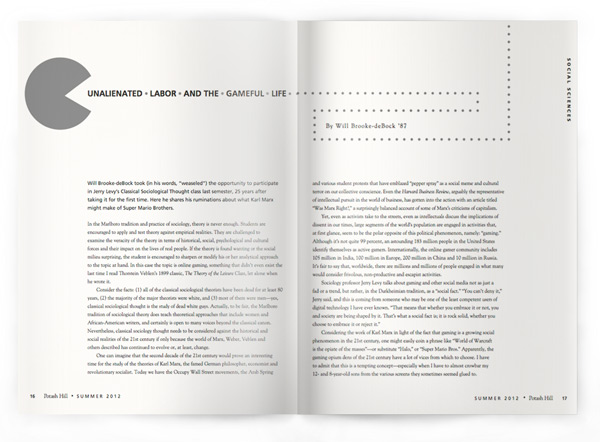
By Will Brooke-deBock ’87
Will Brooke-deBock took (in his words, “weaseled”) the opportunity to participate in Jerry Levy’s Classical Sociological Thought class last semester, 25 years after taking it for the first time. Here he shares his ruminations about what Karl Marx might make of Super Mario Brothers.
In the Marlboro tradition and practice of sociology, theory is never enough. Students are encouraged to apply and test theory against empirical realities. They are challenged to examine the veracity of the theory in terms of historical, social, psychological and cultural forces and their impact on the lives of real people. If the theory is found wanting or the social milieu surprising, the student is encouraged to sharpen or modify his or her analytical approach to the topic at hand. In this case the topic is online gaming, something that didn’t even exist the last time I read Thorstein Veblen’s 1899 classic, The Theory of the Leisure Class, let alone when he wrote it.
Consider the facts: (1) all of the classical sociological theorists have been dead for at least 80 years, (2) the majority of the major theorists were white, and (3) most of them were men—yes, classical sociological thought is the study of dead white guys. Actually, to be fair, the Marlboro tradition of sociological theory does teach theoretical approaches that include women and African-American writers, and certainly is open to many voices beyond the classical canon. Nevertheless, classical sociology thought needs to be considered against the historical and social realities of the 21st century if only because the world of Marx, Weber, Veblen and others described has continued to evolve or, at least, change.
One can imagine that the second decade of the 21st century would prove an interesting time for the study of the theories of Karl Marx, the famed German philosopher, economist and revolutionary socialist. Today we have the Occupy Wall Street movements, the Arab Spring and various student protests that have emblazed “pepper spray” as a social meme and cultural terror on our collective conscience. Even the Harvard Business Review, arguably the representative of intellectual pursuit in the world of business, has gotten into the action with an article titled “Was Marx Right?,” a surprisingly balanced account of some of Marx’s criticisms of capitalism.
Yet, even as activists take to the streets, even as intellectuals discuss the implications of dissent in our times, large segments of the world’s population are engaged in activities that, at first glance, seem to be the polar opposite of this political phenomenon, namely: “gaming.” Although it’s not quite 99 percent, an astounding 183 million people in the United States identify themselves as active gamers. Internationally, the online gamer community includes 105 million in India, 100 million in Europe, 200 million in China and 10 million in Russia. It’s fair to say that, worldwide, there are millions and millions of people engaged in what many would consider frivolous, non-productive and escapist activities.
Sociology professor Jerry Levy talks about gaming and other social media not as just a fad or a trend, but rather, in the Durkheimian tradition, as a “social fact.” “You can’t deny it,” Jerry said, and this is coming from someone who may be one of the least competent users of digital technology I have ever known. “That means that whether you embrace it or not, you and society are being shaped by it. That’s what a social fact is; it is rock solid, whether you choose to embrace it or reject it.”
Considering the work of Karl Marx in light of the fact that gaming is a growing social phenomenon in the 21st century, one might easily coin a phrase like “World of Warcraft is the opiate of the masses”—or substitute “Halo,” or “Super Mario Bros.” Apparently, the gaming opium dens of the 21st century have a lot of vices from which to choose. I have to admit that this is a tempting concept—especially when I have to almost crowbar my 12- and 8-year-old sons from the various screens they sometimes seemed glued to.
Tempting, but probably wrong.
In Reality Is Broken: Why Games Make Us Better and How They Can Change the World, game designer Jane McGonigal shares interesting statistics and empirical analyses that put gaming in a more positive light. Like many similar books (Jonah Leher’s How We Decide and Nicholas Carr’s The Shallows spring to mind), the main theoretical orientation is in the realm of neurochemical processes. McGonigal posits that there is a sense among gaming communities that “Reality, compared to games, is broken.”
“Reality isn’t engineered to maximize our potential,” writes McGonigal. “Reality wasn’t designed from the bottom up to make us happy.” Ultimately, games make us happy and, as she argues, can actually change the world, because they leverage the neuronal and chemical processes of the brain that make us happy. Maybe that opium metaphor is not so far off, after all.
But for the social philosopher and theorist, one needs to dig a little deeper. Let us first consider Marx, the young Marx of the Economic Philosophic Manuscripts of 1844. These are the writings that are often thought to establish Marx as a humanist, and, indeed, were important to the new left during the 1960s. Here we are introduced to Marx’s concept of alienated labor. Marx writes:
This fact expresses nothing but this: the object which labor produces—the product of labor—confronts it as an alien being, as a power independent of the producer…. [T]his realization of labor appears as the loss of reality of the worker, objectification appears as the loss of the object and bondage to it.
It appears that Marx, too, considered reality as flawed. For Marx, labor is alienated in the following conditions: it is external to the worker; it is not voluntary, but coerced; and it is not his or her own, but somebody else’s. In The German Ideology, Marx describes a scenario of an unalienated laborer:
…while in communist society, where nobody has one exclusive sphere of activity, society regulates the general production and this makes it possible for me to do one thing to-day and another to-morrow, to hunt in the morning, fish in the afternoon, rear cattle in the evening, criticize after dinner, just as I have a mind, without ever becoming hunter, fisherman, shepherd or critic.
I have to admit that when I was first introduced to Marx in the 1980s, it was hard to read passages like this without thinking of “back-to-the-land” communards living together in intentional communities—sometimes with the worst stereotypes in mind. The concept of alienated labor rang true to me, but the alternatives of what unalienated labor would really be like rang flat and hollow.
But consider McGonigal’s four defining traits of a game: a goal, giving the game a sense of purpose; rules, which guide the way one can reach one’s goal and, by definition, foster creative and strategic thinking; a feedback system, so you always know how you are doing; and voluntary participation—it wouldn’t be a game if you had to play it. McGonigal also cites non-essential traits of some games, including interactivity, rewards, competition and winning. Even with this abbreviated list, one gets the sense that we’re not describing the mechanisms of a multi-billion-dollar escapist industry, but something meaningful, purposeful and profoundly human.
She boils it down to this: “Games make us happy because they are hard work that we choose for ourselves, and it turns out that almost nothing makes us happier than good, hard work.”
I have not found a better contemporary conceptualization of unalienated labor in the 21st century. With or without intending to, McGonigal has turned the concepts of work and play on their heads, challenging us to reconsider the importance of games and a “gameful life.” Her work has opened up the discourse about meaningful work to many voices and perspectives, including those of the classical sociological theorists.
After earning his degree in sociology, Will Brooke-deBock went on to gain a master’s degree in Internet strategy management at Marlboro College Graduate School, becoming the college’s first dual graduate in 1998. Will has worked for many years at Kaplan University, where he is now a curriculum designer. He is also an independent provider of digital media education through his blog, innovationslab. wordpress.com.
Reflecting on terrorism
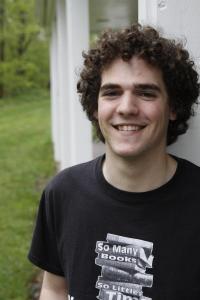 Far from the benign worlds of online gaming, “real” life has never been the same since September 11, 2001. Jack Rossiter-Munley ’12 devoted his Plan of Concentration to the cultural and political impact of the terrorist attacks, including co-teaching a course called After 9/11. “I noticed that whenever people found out what I was studying their first instinct was to tell me about their personal experiences on the day and offer their opinions on what came after,” said Jack. “I realized that it would be interesting to capture some of these personal experiences and match them up with the academic voices that I had been interacting with.” In his Plan, Jack explored how 9/11 was a transformational event in world politics and examined critical responses to the attacks.
Far from the benign worlds of online gaming, “real” life has never been the same since September 11, 2001. Jack Rossiter-Munley ’12 devoted his Plan of Concentration to the cultural and political impact of the terrorist attacks, including co-teaching a course called After 9/11. “I noticed that whenever people found out what I was studying their first instinct was to tell me about their personal experiences on the day and offer their opinions on what came after,” said Jack. “I realized that it would be interesting to capture some of these personal experiences and match them up with the academic voices that I had been interacting with.” In his Plan, Jack explored how 9/11 was a transformational event in world politics and examined critical responses to the attacks.
On & Off the Hill
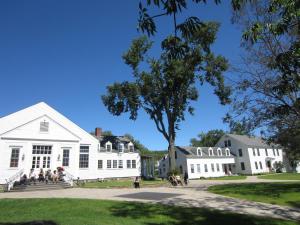 This issue celebrates Marlboro's 65 years, including a look at how the college has changed and what some teachers learned about learning while they were here. We also say farewell to writing professor Laura Stevenson, join some students on their trip to Mexico City and see what went down at the Vermont Academy of Arts and Sciences Intercollegiate Student Symposium this year.
This issue celebrates Marlboro's 65 years, including a look at how the college has changed and what some teachers learned about learning while they were here. We also say farewell to writing professor Laura Stevenson, join some students on their trip to Mexico City and see what went down at the Vermont Academy of Arts and Sciences Intercollegiate Student Symposium this year.
The age of reasoned renewal
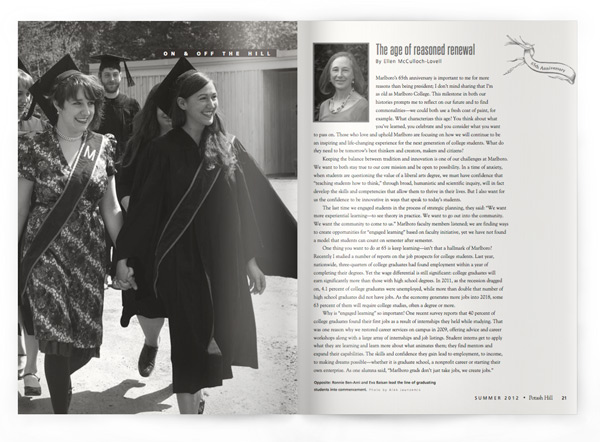
By Ellen McCulloch-Lovell
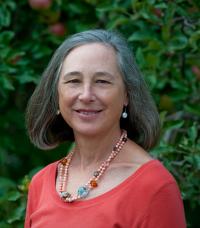 Marlboro’s 65th anniversary is important to me for more reasons than being president; I don’t mind sharing that I’m as old as Marlboro College. This milestone in both our histories prompts me to reflect on our future and to find commonalities—we could both use a fresh coat of paint, for example. What characterizes this age? You think about what you’ve learned, you celebrate and you consider what you want to pass on. Those who love and uphold Marlboro are focusing on how we will continue to be an inspiring and life-changing experience for the next generation of college students. What do they need to be tomorrow’s best thinkers and creators, makers and citizens?
Marlboro’s 65th anniversary is important to me for more reasons than being president; I don’t mind sharing that I’m as old as Marlboro College. This milestone in both our histories prompts me to reflect on our future and to find commonalities—we could both use a fresh coat of paint, for example. What characterizes this age? You think about what you’ve learned, you celebrate and you consider what you want to pass on. Those who love and uphold Marlboro are focusing on how we will continue to be an inspiring and life-changing experience for the next generation of college students. What do they need to be tomorrow’s best thinkers and creators, makers and citizens?
Keeping the balance between tradition and innovation is one of our challenges at Marlboro. We want to both stay true to our core mission and be open to possibility. In a time of anxiety, when students are questioning the value of a liberal arts degree, we must have confidence that “teaching students how to think,” through broad, humanistic and scientific inquiry, will in fact develop the skills and competencies that allow them to thrive in their lives. But I also want for us the confidence to be innovative in ways that speak to today’s students.
The last time we engaged students in the process of strategic planning, they said: “We want more experiential learning—to see theory in practice. We want to go out into the community. We want the community to come to us.” Marlboro faculty members listened; we are finding ways to create opportunities for “engaged learning” based on faculty initiative, yet we have not found a model that students can count on semester after semester.
One thing you want to do at 65 is keep learning—isn’t that a hallmark of Marlboro? Recently I studied a number of reports on the job prospects for college students. Last year, nationwide, three-quarters of college graduates had found employment within a year of completing their degrees. Yet the wage differential is still significant: college graduates will earn significantly more than those with high school degrees. In 2011, as the recession dragged on, 4.1 percent of college graduates were unemployed, while more than double that number of high school graduates did not have jobs. As the economy generates more jobs into 2018, some 63 percent of them will require college studies, often a degree or more.
Why is “engaged learning” so important? One recent survey reports that 40 percent of college graduates found their first jobs as a result of internships they held while studying. That was one reason why we restored career services on campus in 2009, offering advice and career workshops along with a large array of internships and job listings. Student interns get to apply what they are learning and learn more about what animates them; they find mentors and expand their capabilities. The skills and confidence they gain lead to employment, to income, to making dreams possible—whether it is graduate school, a nonprofit career or starting their own enterprise. As one alumna said, “Marlboro grads don’t just take jobs, we create jobs.”
Day to day at the college, I’m very moved and affected by the transition in the faculty that we’re continuing to see at quite a rapid pace. Revered, honored, long-serving faculty are retiring each year, and that makes us sad. Yet there is also excitement that comes when someone new arrives, embraces the place and says, “I found my home.” A profound question for us, as it is for anyone who grows older, is how do you honor the past even while being open to new ideas? We must respect and build on the work of those who upheld this institution for years, making it what it is today. At the same time, when we invite new faculty here, we are saying, “Come to Marlboro and give us all your gifts.”
Marlboro is a fundamentally creative place. Although I’ve worked for years in the arts, I’ve never experienced an atmosphere where so much creativity occurs so abundantly that we don’t even name it. Creativity thrives by allowing the “widest and freest ranging of the human mind” according to Brewster Ghiselin in his 1952 book, The Creative Process . But to complete this process, “what is needed is control and direction.” The creative process is stimulated when previously disparate elements are related, similar to what happens here in interdisciplinary studies and team teaching.
I believe that creativity is a part of the fabric of Marlboro, starting with the veterans who came and slept under the apple trees while they made an old farmhouse into a dorm. It’s a habit of mind and a habit of making that happens in the faculty-student interactions and is also encouraged outside the classroom, studio and laboratory. It is also inspired by our being in a beautiful place. You gain a sense of both sanctuary and possibility here—a haven for learning, a haven for becoming. It gives me great hope that Marlboro has the creativity to evolve and renew itself to meet the needs of future students.
At 65 years old you step back—you assess. You say, “What do I want to do next? I don’t want to just repeat myself.” Similarly, I think institutions have to be very conscious of where they are headed. I want new stories for myself, and I feel the same way about Marlboro. We’ve got a great story, one that needs to be continually renewed and told.
Teachable Moments
To mark this 65th anniversary of the college, we checked under the hood of Marlboro’s legacy in the world of education—its pedagogical footprint so to speak. Here is what a few alumni, who themselves became teachers, have to say about how they learned what they learned at Marlboro, and how those lessons inform their teaching methods today.
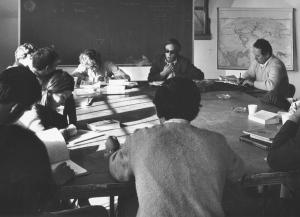 Dan Hudkins ’73 is the director of instructional technology and information technology service and support at the Harker School in San Jose, California, where he also teaches moral philosophy and coaches softball. “Education was certainly on my radar when I got to Marlboro, and I took a Philosophy of Education class from Geri Pittman during my freshman year, but I didn’t become an educator until 1994—21 years after I graduated.
Dan Hudkins ’73 is the director of instructional technology and information technology service and support at the Harker School in San Jose, California, where he also teaches moral philosophy and coaches softball. “Education was certainly on my radar when I got to Marlboro, and I took a Philosophy of Education class from Geri Pittman during my freshman year, but I didn’t become an educator until 1994—21 years after I graduated.
“The pedagogy used at Marlboro influenced my own teaching style enormously. Respect for the learner, high expectations and a willingness to follow where the student’s interests lead were all things I learned from people like Geri Pittman, Roland Boyden and Dick Judd. My favorite learning moment was writing a concluding paper for a Marxism and Existentialism class in the spring of 1970. John Woodland, Nan deVries, Pedie Parks and I spent an enormous amount of time upstairs in John’s room, all working at the same time, reading bits to each other, arguing and rewriting.
“My favorite thing about teaching is unquestionably the students. There are these moments in class when I know that a student’s prior assumptions are shattered around their ankles and they have to start trying to understand themselves and the world from another perspective.
“Marlboro prepared me best by making me a fearless thinker and giving me the sometimes naive assumption that I could learn almost anything. I always begin with the idea that if I don’t understand or can’t figure it out, I will if I keep working at it.”
Arleen Tuchman ’77 is a history professor at Vanderbilt University, where she has been teaching since 1986. “When I went to graduate school to study the history of science and medicine, my goal was to teach at a liberal arts college. I’m not sure I imagined myself at a place as small as Marlboro, but I definitely wanted a position at a school that cared about teaching students to think critically, to express themselves clearly and to write well.
“My experiences at Marlboro definitely shaped my understanding of the liberal arts and influenced the way I engage my students in the classroom. I enjoy seminars the most because I love to see students get excited about ideas. Although I am clearly more knowledgeable than my students, I see my role as more akin to a facilitator, encouraging students to engage with texts and develop their own well-grounded analysis of the content.
“I fondly remember doing an independent study with Bob Engel on endocrinology. We would sit outside on the grass and I would ‘teach’ Bob what I had learned while he posed questions. I loved the reversal of roles and the relaxed nature of the exchange. Dick Lewontin came to Marlboro to teach population biology, and I’ll never forget his attempt to enact the concept of random genetic drift: he pushed his stomach out, rearranged the buttons on his shirt so they were in disarray, lowered his glasses to the tip of his nose and proceeded to stagger around in front of the class.”
John Gilliom ’82 is a professor of political science at Ohio University, where he has been teaching for 21 years and associate dean of the College of Arts and Sciences. “My Marlboro experience made me want to be both a college professor and an amateur farmer. During the school years, I worked with Dick Judd on the arts of history and writing. During the summers, I worked with Sue Judd as her garden assistant and rototiller pilot. I now teach by day and farm by night. My university colleagues all find it rather bizarre, but I like to think that anyone from Marlboro would understand just fine.
“It’s impossible to make the pedagogical magic of Marlboro work at a 30,000-student university with classes ranging from a tiny 25 up to a few hundred. But there are a few things that can be drawn upon. Informality. Accessibility. Plain speech. Faith in the need for individuals to find their own way. And, of course, to this day, I believe that clear writing is the foundation of a college education.
“On a clear, warm, April day in my freshman year at Marlboro, I opted to skip my American Political Thought class to join nearly every other student in an impromptu springfest. I was dozing in the sun when an improbable cloud blocked the warmth. I opened my eyes to look up at the bowtie, pipe, tweed jacket and bushy eyebrows of professor Judd, who said, ‘I just wanted to make sure that you were okay.’ Then he simply grunted and walked away. It was the last class that I ever skipped. Care matters.”
Jake Dalton ’92 is an assistant professor of Tibetan Buddhism at University of California, Berkeley, where he has been teaching for three years. “Marlboro allowed me to develop my interests in Buddhist studies in ways no other college would. Working so closely with Jet Thomas and Birje Patil, reading texts side by side in their offices, taught me how to really read, how to let go of my own narcissistic concerns, leap into the text and allow it to transform me.
“The Plan of Concentration gave me the freedom to explore and was fundamental to building my confidence so that I could succeed in graduate school. Already on day one of grad school, I was way ahead of many of my peers, as I knew how to conduct research and write in a sustained way.
“There are two approaches to education. The first involves the student disciplining him or herself to work hard, the second involves the student finding what she or he loves and playing in it. Of course the latter is the ideal, and Marlboro supports its students to follow this path, to discover what they love and explore it in their own way. In my own teaching, I try to offer my students the same kind of open support, allowing them to find their own ways yet being there to help whenever they need it. It can be risky, as some may not find their way, but Marlboro taught me it is worth it.”
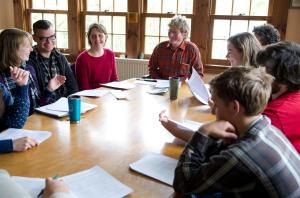 Barbara Whitney ’97 is the director of theater at Pingree School in South Hamilton, Massachusetts. “In many ways, Marlboro ruined me for subsequent educational experiences. I continue to marvel at the institution’s ability to be flexible in response to myriad situations as well as securely committed to a particular identity. Marlboro showed me that it’s possible to have a community of curiosity-driven, passionate learners who are supported by a community of curiosity-driven, passionate leaders.
Barbara Whitney ’97 is the director of theater at Pingree School in South Hamilton, Massachusetts. “In many ways, Marlboro ruined me for subsequent educational experiences. I continue to marvel at the institution’s ability to be flexible in response to myriad situations as well as securely committed to a particular identity. Marlboro showed me that it’s possible to have a community of curiosity-driven, passionate learners who are supported by a community of curiosity-driven, passionate leaders.
“Marlboro teachers generally practiced a mindset of respecting students and recognizing that student and teacher were together on the same path—sometimes at different places, but the same path. What forged the bond was asking questions, arguing, practicing, reflecting and sharing insights and personal experiences.
“Real learning can feel unsafe. It knocks up against assumptions and clichés, stereotypes and laziness. As a teacher I have to keep asking more questions rather than delivering answers. I have to believe that the classroom exists in order to serve communication, connection and discovery. My students have to know that I care about them, that I see them and that I will do whatever I can to cultivate the relationship and the environment so they can feel safe to question and discover.
“I think about Marlboro almost every day, little flickers of memory as I weave through clumps of students in the hall, hearing bells and lockers and the incessant tide of adolescent chatter. I try to bring a little of it with me, little threads of Vermont grace.”
Nate Totushek ’07 just finished his second year as chemistry teacher at School One in Providence, Rhode Island. “It’s a small, arts-oriented high school with a nice, cozy student-faculty ratio. This allows us to explore some of the deeper questions, like ‘What is empty space made of?’ I spent a year as a fulltime teacher in New York City before coming here, and it’s interesting how I am now in a place where I can combine the barefoot expeditionalism of Marlboro’s approach with the slick, cold steel of urban factory schooling.
“Teaching keeps me sharp, learning stuff I should have learned in high school. It also gives me a place to practice my stand-up routine and magic tricks. But education is far from being my ‘profession’; this was a revelation that I came to while studying education at Marlboro. A school needs a positive, slightly anarchistic presence or kids are likely to enter adulthood with a chip either on the shoulder or in the brain. Not sure which is worse, but at any rate schools are where society is designed, so I appreciate the Marlboro approach: It’s your education, take it or leave it.
“One thing that was extremely motivating at Marlboro was the feeling that nobody else was going to care whether I completed a project. This gave me a tremendous sense of ownership over my successes, because I had nobody else to blame for my failures. Perhaps it’s not the fastest way to skin a cat, but in many ways it’s the most thorough.”
65 years later...
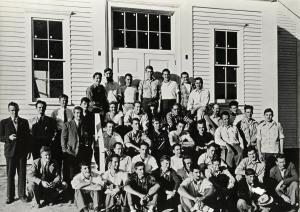 Then
Then
- Number of students: 50
- Number of veterans: 35
- Percent women: 0
- Tuition, room and board: $1,200
- Fulltime faculty: 5
- Percent faculty of color: 0
- Areas of study: social studies, science, mathematics and languages
- Staff: 0
- Student accommodations: blacksmith shop and tents
- Renovations: Mather and dining hall
- New construction: sugarhouse
- Fashion statement: flannel shirts
- Footwear: saddle shoes and penny loafers
- Emblematic dead tree: removed from in front of dining hall
- Books in library: 12,000
- First graduating class: 1
- First commencement speaker: author Dorothy Canfield Fisher
- Poem read at commencement by: Robert Frost
- First fundraiser: $3,800 from a benefit concert by Rudolf Serkin and Adolf Busch
- Endowment: $0
- Marlboro Citizen ad: “Will exchange furnished room in rural Vermont for Florida lodging.”
- “We are interested in broad general education, cutting across the narrow lines of specialized interest.” —Walter Hendricks, president
- “Marlboro’s first aim is to develop citizens who will be effective in the task of making American democracy succeed.” —Marlboro College prospectus
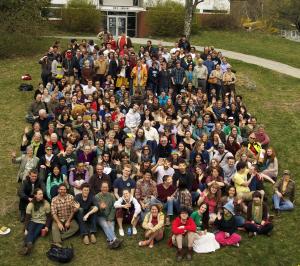 Now
Now
- Number of students: 260
- Number of veterans: 2
- Percent women: 49
- Tuition, room and board: $46,000
- Fulltime faculty: 40
- Percent faculty of color: 10
- Areas of study: 34
- Staff: 67
- Student accommodations: 11 dorms plus cottages
- Renovations: admissions building
- New construction: greenhouse
- Fashion statement: flannel shirts
- Footwear: Sorels and bare feet
- Emblematic dead tree: removed from behind admissions building
- Books in library: 75,000
- Graduating class: 70
- Commencement speaker: author and environmentalist Bill McKibben
- Poem read at commencement by: Verandah Porche
- Recent fundraiser: $1,275,946 for 2011 Annual Fund
- Endowment: $36 million
- Marlboro Citizen ad: “I’m looking for a new best friend. Candidates should be Jewish, neurotic Freudians and pathological narcissists.”
- “We want to provide access to a broad range of knowledge that contains the seeds of its own expansion.” —Ellen McCulloch-Lovell, president
- “The college promotes independence by requiring students to participate in the planning of their own programs of study and to act responsibly within a self-governing community.” —Marlboro College mission statement
Laura Stevenson turns a new page
“The first winter I was here we got a big snowstorm, and when I finally got to campus with my snowshoes and shovel, there were the president and the dean shoveling the walks around Mather,” said Laura Stevenson. “I pitched in, thinking, ‘I love this place.’” The staff has grown considerably since 1986, when Laura began teaching writing and literature at Marlboro, but her steadfast support for excellent writing at Marlboro has remained the same. This year we bid farewell to Laura, as she retires to the idyllic life of reading, writing and gardening at her Wilmington farm.
“Laura has been the best kind of colleague anybody could wish for,” said writing professor John Sheehy, who has worked alongside her since 1998. “She treated me, as a fellow teacher and scholar, the way she treated students: she wanted, always, to see our best. It is that quality in her—high expectations, combined with an unflagging confidence that we would meet them—that make her such a valuable ally for a writer, or for a teacher.”
Laura’s students over the years had the same assessment. “My favorite thing about having her as a professor was that she didn’t treat me as if she were a professor and I a student,” said Emily Field ’11. “She treated me as a peer and an equal, a respected fellow writer who could be negotiated with instead of a student who had to be dictated to. That kind of display of confidence does wonders for a writing student.”
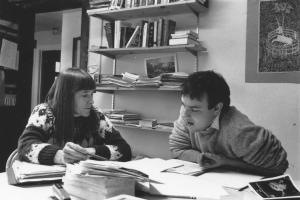 Mark Roessler ’90 said, “I had an epic, young adult fantasy novel I’d been pecking away at through high school, and I was looking for guidance. Little did I know, Laura had been working on a young adult fantasy novel of her own. Over a weekend, she read my book. She told me she thought she could help me, and for the first time in my life, I felt that I was being taken seriously as a writer. Right off the bat, she began to prescribe remedies that have had a positive, lifelong effect.” Mark is now managing editor of the Valley Advocate.
Mark Roessler ’90 said, “I had an epic, young adult fantasy novel I’d been pecking away at through high school, and I was looking for guidance. Little did I know, Laura had been working on a young adult fantasy novel of her own. Over a weekend, she read my book. She told me she thought she could help me, and for the first time in my life, I felt that I was being taken seriously as a writer. Right off the bat, she began to prescribe remedies that have had a positive, lifelong effect.” Mark is now managing editor of the Valley Advocate.
“Laura does not condescend,” said Becca Mallary ’11, who found in her a perfect mentor for her Plan work in young adult fiction and feminism. “Her willingness to treat everyone as her equal is also what makes her such a masterful storyteller, and she taught me that talking down to your reader gets you nowhere. You must trust them if they’re going to trust you. The same can be said for the relationship between Plan sponsor and student, and it was such a joy to build a relationship based on trust, respect and mutual interests with her.”
“The most gratifying thing about teaching writing is watching the students get better,” said Laura. “They find they can do it, and then they just take off.”
Laura’s own writing took off as well, after she started teaching at Marlboro. A Yale-trained historian and author of Praise and Paradox: Merchants and Craftsmen in Elizabethan Popular Literature (1984), she has published four children’s novels since 1990 (Happily After All, The Island and the Ring, All the King’s Horses and A Castle in the Window) and in 2010 a novel for adults (Return in Kind) . A National Endowment for the Humanities research fellowship in 1996–97 resulted in several critical studies of late 19th-century children’s literature. But some of her greatest joys were found collaborating on short works of children’s fiction with Marlboro student illustrators.
“Through working with Laura I definitely became a better translator of thoughts into doodles— a crucial skill when illustrating,” said Ulla Valk ’03, who as a junior illustrated Laura’s “The Knight of the Side-Hill Wumpus” (Potash Hill , Summer-Fall 2002). “It was the first time I had to come up with characters and surroundings that actually corresponded with those in another person’s head. The particularly cool thing about doing that with Laura was that she has an awesomely rich imagination and this incredible ability to very elaborately describe what she envisions.”
 Besides helping many individual student writers along, Laura’s lasting legacy at Marlboro has been her role in building a solid writing program. She said, “The writing requirement was in place when I came, but nobody quite knew how it worked or how long students got to pass it, and the whole thing was without direction. In the early 1990s the present setup of nonrequired, interdisciplinary writing seminars was created by the English Committee, under my direction, and that has stayed in place ever since. Writing isn’t taken for granted at Marlboro; it gets a lot of attention. That’s a real achievement—and certainly not just my achievement.”
Besides helping many individual student writers along, Laura’s lasting legacy at Marlboro has been her role in building a solid writing program. She said, “The writing requirement was in place when I came, but nobody quite knew how it worked or how long students got to pass it, and the whole thing was without direction. In the early 1990s the present setup of nonrequired, interdisciplinary writing seminars was created by the English Committee, under my direction, and that has stayed in place ever since. Writing isn’t taken for granted at Marlboro; it gets a lot of attention. That’s a real achievement—and certainly not just my achievement.”
Laura’s quiet confidence and patient persistence were an inspiration to many, made even more inspiring because she taught with what, for most teachers, would be a profound disability. She began losing her hearing before she came to Marlboro and taught for many years unable to hear at all before she had a cochlear implant.
“She soldiered on, always,” said John. “She figured out ways to teach when she couldn’t hear—to lead discussions, to confer privately with students, to guide students in their thinking and their writing. I think it is a testament to just what kind of teacher she is, what kind of person she is, that if you asked just about any of the students who loved her over the years to tell you about Laura, probably none of them would even mention that she is deaf. She made managing her deafness look easy.”
“Laura believes that everyone, everyone , has the ability to write well, and of course she is right,” said Emily. “I don’t know where she gets the compassion and the patience—or the wisdom. She doesn’t even make a big deal out of it, like she’s ‘rescuing’ a student. It’s just everyday business for her, getting good work out of a diverse array of students. Like it’s the easiest thing in the world.”
John added, “She made most things look easy. She is one of the smartest, funniest, most thoughtful and least complacent people I know. She is the absolute original of herself.”
Students visit City of Dreadful Delight
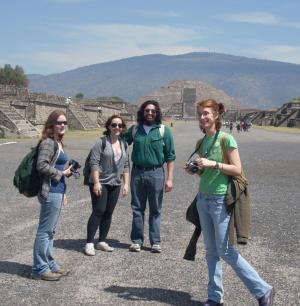 During Spring Break, seven students and three faculty members traveled to Mexico City to explore local history, art and the development of Mexican society and culture from precolonial times to the present. The trip was an extension of a spring course called City of Dreadful Delight, Mexico City: From Tenochtitlan, Capital City of the Aztec Empire, to Post-Modern Megalopolis, taught by Spanish professor Rosario de Swanson and art professors Tim Segar and Cathy Osman.
During Spring Break, seven students and three faculty members traveled to Mexico City to explore local history, art and the development of Mexican society and culture from precolonial times to the present. The trip was an extension of a spring course called City of Dreadful Delight, Mexico City: From Tenochtitlan, Capital City of the Aztec Empire, to Post-Modern Megalopolis, taught by Spanish professor Rosario de Swanson and art professors Tim Segar and Cathy Osman.
“This course focused on Mexico City as a case study in which to read the evidence of the historical, political, social, economic and cultural life of the country,” said Rosario. The March trip, made possible with support from the Christian Johnson Endeavor Fund, included visits to the ancient city of Teotihuacán, the historic canal district of Xochimilco and the house of Diego Rivera and Frida Kahlo.
“Frida’s house was truly amazing,” said freshman Caitlin Hargrove. “Her work hurts, because it’s so truthful and beautiful and ugly at the same time, and it tears away at you in a way that is good and healthy. Frida really lived, she really felt all her emotions with her whole body, and I think a lot of people these days can learn from that.”
Sophomore Daniel Kalla said, “A highlight was our day trip to Cholula to see the pyramids that were buried as protection from the Spaniards during the conquest, and visiting the cathedral built on the peak of the Great Pyramid.”
A two-day side trip brought the group to Puebla for a taste of colonial architecture, such as the 17th-century church Santa María Tonantsintla and other historic buildings. They also dropped in on alumna Jennifer Musi ’04, a former student of Cathy and Tim’s, who lives in a beautiful neighborhood of Mexico City, where she continues to pursue her interests in ceramics.
The students’ explorations of Mexico City brought to life what they had learned in class and helped inform discussions for the rest of the semester. “After studying the history of Mexico, the syncretism between the European influences and the indigenous influences is really apparent,” said junior Nicole Haeger.
“I learned more about gender roles in Mexico through just being there and observing,” added Caitlin, who is interested in women’s studies, gender and sexuality. “By watching the people and their relations with one another, you can learn a lot about the way that culture shapes thought processes.”
Sophomore James Munoz said, “ I enjoyed being fulfilled intellectually, culturally and emotionally.” Other Spring Break trips that played a similar role took students to Virginia to build houses for Habitats for Humanity and to the Navajo Nation in Arizona as part of an interdisciplinary class on service-learning with the Diné and Lakota peoples.
Marlboro hosts student symposium
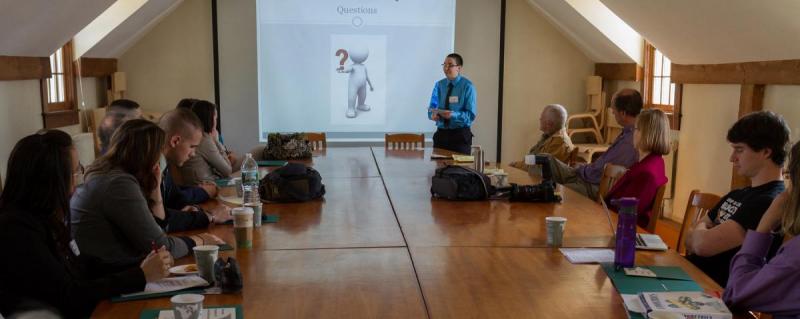
Each spring the Vermont Academy of Arts and Sciences (VAAS) sponsors the Vermont Intercollegiate Student Symposium, at which students from across the state present work in diverse areas of study. This year Marlboro College hosted the symposium for the first time, welcoming more than 40 student presenters and other visitors from six colleges across the state on April 14.
“The conference was a wonderful opportunity for students from different institutions to share their interests with each other and a wider audience,” said Kate Ratcliff, Marlboro professor of American studies and this year’s symposium orchestrator. “It was so gratifying to see classrooms across campus filled with students from colleges all over Vermont.” Kate is on the board of VAAS, which was organized in 1965 to foster wider and more intensive participation in the arts, humanities and sciences in Vermont.
In addition to 15 students from Marlboro, participants came from the University of Vermont, St. Michaels College, Norwich University, Castleton State College and Green Mountain College. The presentations, which were organized in panels of four students and took place all across campus, drew from the fields of history, literature, political science, math, psychology, dance, theater and visual arts.
“I tried to create panels that linked papers around a broad common theme or themes and that included participants from different institutions, in the hopes of fostering interdisciplinary and intercollegiate dialogue,” said Kate.
A literary studies panel moderated by writing professor John Sheehy included senior Brandon Willits’ analysis of wilderness themes in William Faulkner’s Go Down, Moses. “I was fascinated with the idea of wilderness as a transformative space, and when I initially approached Faulkner I definitely believed that wilderness was spiritual,” said Brandon. But, like Isaac McCaslin in Faulkner’s seminal collection of stories, Brandon developed a different perception of wilderness while working for the park service last summer. “It was really important to me to understand how Faulkner uses language to present wilderness as a transformative space and to reconcile that with my own ideas of physically living in a wild space.”
In the same panel, junior Sam Grayck talked about the trials of translating Antoine de Saint-Exupery’s The Little Prince from the French. Other Marlboro students who presented at the symposium included senior Alex Tolstoi, who discussed Charles Phelps and the politics of internal dissent in revolutionary Vermont, and junior Alexia Boggs, who talked about Plato and the occupy movement. In a panel called “Men, Women and Family in American Culture,” moderated by Kate, sophomore Emma Thacker discussed complex families and senior Jory Shareef addressed historic representations of women.
Marlboro was well represented in the panel on visual and performing art, with entries from seniors Logan Smith (theater), Zach Parks (sculpture), Katherine Trahan (theater) and Cookie Harrist (dance). A panel titled “Constructions of Self and Other” included junior Cameron Cobane’s study of German director Fatih Akin, sophomore Aiden Keeva’s analysis of poet Gary Snyder’s ethics of eating and freshman Haley Peter’s insightful look at the legend of Bigfoot.
“Bigfoot gave America a strengthened sense of identity during the paranoia of the Cold War, and he represented a hope that transcended the newly understood destruction of the wilderness,” said Haley.
Senior Willie Finkel presented “The War Within: Famine and the Confederacy,” and senior Lauren Dushay talked about mentoring in the LGBTQ community. Kate said, “Several of the Marlboro seniors who participated told me it was a wonderful opportunity to articulate and discuss their research in preparation for upcoming orals.” It was a great experience for everyone involved, although one student noted that a disadvantage to participating was missing out on the other panels. Hopes were high that it would not be another 47 years before Marlboro hosts the spring symposium again.
New Marlboro offerings expand audience
This summer, a select group of teenagers are experiencing the intellectually challenging academic environment and rewards of a college course, more specifically a college course at Marlboro. Two weeklong seminars, led by philosophy professor William Edelglass and politics professor Meg Mott, are the first in a series of pre-college summer programs designed to give local youth the opportunity to study directly with faculty members and a group of other students passionate about learning.
“What does it mean to grow your food in a world where most of what we eat is produced by machines?” asks Meg, whose course this summer is called Eating Against the Machine. Students in her course will explore the connections between economics, politics and food, splitting their time between hands-on visits to farms and big-picture conversations. William’s course, Philosophies of the Wilderness, will give students the opportunity to reflect together on their relationship to “wilderness” and the moral dimensions of living with animals and ecosystems, as well as with other humans.
“These programs are great preparation for college, priming young minds and souls for life in an academic community and beyond,” said Ariel Brooks, director of non-degree programs. They complement other Marlboro programs designed to open doors for local teens, such as free classes for area high school students and Friday Night (rainbow) Lights, a drop-in group for lesbian, gay, bisexual, transgender, queer and questioning (LGBTQQ) teens held at the Marlboro College Graduate School.
At the other end of the undergraduate years, Marlboro has made a concerted effort to make the graduate school more accessible and relevant to students on Potash Hill. The dual degree program allows students to build on their academic interests and earn a marketable graduate degree within a year or two of college graduation. In most cases, students can take graduate classes while still undergraduates, enabling them to start their graduate program ahead of the game and reduce their credit fees.
“Marlboro College’s dual degree program is the best of both worlds,” said Ariel. “Students in the program can continue their Marlboro studies on their own terms, knowing that the graduate school will allow them to apply their academic experience to a career in education, business or nonprofit management.”
Graduate programs offered through the dual degree program are the Master of Arts in Teaching for Social Justice, the Master of Arts in Teaching with Technology, the Master of Science in Managing Mission-Driven Organizations and the MBA in Managing for Sustainability. Marlboro students will find many familiar features at the graduate school, including small classes, self-directed learning, project-based work and a focus on clear communication.
“I wanted the same level of creative and critical thinking in a teacher certification program that characterized my undergraduate experience,” said Amanda DeBisschop ’10, who is enrolled in the teaching for social justice program. “The faculty is completely dedicated to educating active and effective teachers, and the students are determined to learn what good teaching looks and feels like.”
And more
 This year marked a bumper crop of faculty babies, including Lars Marion Lyndgaard (left), born to writing professor Kyhl Lyndgaard and his wife, Marian, on February 15, and Henry Brett Hobbie (right), born to biology professor Jaime Tanner and her husband, Than, on December 19. Not pictured are Molly Rose Ollis, born on August 7 (to math professor Matt Ollis and his wife, Gemma); Elana Oralee Wickenden, born on September 14 (to history professor Adam Franklin-Lyon and his wife, Maggie); and Raziq Lyle Latif, born on October 18 (to religion professor Amer Latif and his wife, Ruby). Must be something in the food.
This year marked a bumper crop of faculty babies, including Lars Marion Lyndgaard (left), born to writing professor Kyhl Lyndgaard and his wife, Marian, on February 15, and Henry Brett Hobbie (right), born to biology professor Jaime Tanner and her husband, Than, on December 19. Not pictured are Molly Rose Ollis, born on August 7 (to math professor Matt Ollis and his wife, Gemma); Elana Oralee Wickenden, born on September 14 (to history professor Adam Franklin-Lyon and his wife, Maggie); and Raziq Lyle Latif, born on October 18 (to religion professor Amer Latif and his wife, Ruby). Must be something in the food.
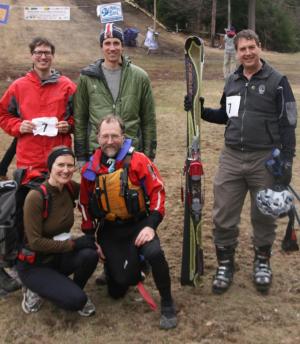 Where and when else can you do winter, spring and summer sports at the same time? In March, writing professor Kyhl Lyndgaard, Willson Gaul ’10, health services director Max Foldeak, outdoor program director Randy Knaggs ’94 and his partner, Deb Dorsett, participated in the first annual Berkshire Highlands Pentathlon, an event benefitting local land preservation and education. Their team came in sixth (out of 56 teams) in the five events: a 10-kilometer trail run, 23 miles of road biking, five miles of kayaking, a mile climb to the top of a mountain and a downhill ski to the finish.
Where and when else can you do winter, spring and summer sports at the same time? In March, writing professor Kyhl Lyndgaard, Willson Gaul ’10, health services director Max Foldeak, outdoor program director Randy Knaggs ’94 and his partner, Deb Dorsett, participated in the first annual Berkshire Highlands Pentathlon, an event benefitting local land preservation and education. Their team came in sixth (out of 56 teams) in the five events: a 10-kilometer trail run, 23 miles of road biking, five miles of kayaking, a mile climb to the top of a mountain and a downhill ski to the finish.
 The library’s first-ever letter-writing social brought a flurry of clackity-clacking activity to the reading room in February. Students accustomed to texting on smart phones waxed nostalgic while typing on machines with names like Remington, Smith Corona and Olympia. The fresh baked goodies, tea and “soda pop” bottled in antique 7-ounce bottles rounded out the experience, sure to be repeated in future years.
The library’s first-ever letter-writing social brought a flurry of clackity-clacking activity to the reading room in February. Students accustomed to texting on smart phones waxed nostalgic while typing on machines with names like Remington, Smith Corona and Olympia. The fresh baked goodies, tea and “soda pop” bottled in antique 7-ounce bottles rounded out the experience, sure to be repeated in future years.
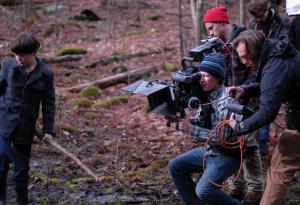 The town of Marlboro was in the throes of Northern Borders fever this spring, as the Movies from Marlboro hands-on film intensive (Potash Hill , Summer 2011) staged scenes in locations ranging from the Whetstone Inn to Mark and Megan Littlehales’ chicken coop. Despite technical difficulties including no snow, no cluster flies and not enough hours in a day, students and professionals in the program shot footage for the full-length movie and gained practical experience not available in the classroom. Learn more at www.northernbordersfilm.com. Photo by Willow O’Feral ’07
The town of Marlboro was in the throes of Northern Borders fever this spring, as the Movies from Marlboro hands-on film intensive (Potash Hill , Summer 2011) staged scenes in locations ranging from the Whetstone Inn to Mark and Megan Littlehales’ chicken coop. Despite technical difficulties including no snow, no cluster flies and not enough hours in a day, students and professionals in the program shot footage for the full-length movie and gained practical experience not available in the classroom. Learn more at www.northernbordersfilm.com. Photo by Willow O’Feral ’07
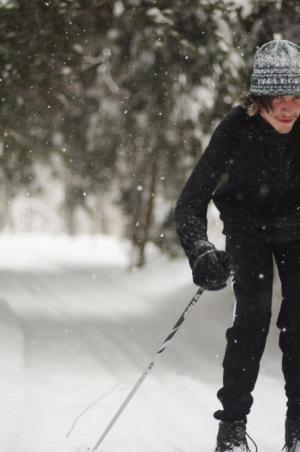 Despite the lack of snow, the cross-country ski team was an enthusiastic group this year. Several members participated in the Winter Break trip to St. Anne, Quebec, for a glimpse of what snow should look like, and another group returned to Morin Heights, Quebec, for Spring Break. Although the annual Wendell-Judd cup had to be postponed, and then cancelled on account of rain, the day before the scheduled event offered the best conditions of the winter, and a few members of the team had a spirited race of their own. Photo by Pearse Pinch
Despite the lack of snow, the cross-country ski team was an enthusiastic group this year. Several members participated in the Winter Break trip to St. Anne, Quebec, for a glimpse of what snow should look like, and another group returned to Morin Heights, Quebec, for Spring Break. Although the annual Wendell-Judd cup had to be postponed, and then cancelled on account of rain, the day before the scheduled event offered the best conditions of the winter, and a few members of the team had a spirited race of their own. Photo by Pearse Pinch
In April and May, the Marlboro community was treated to a plethora of plays by Marlboro seniors Logan Smith, Grace Leathrum, Mercedes Lake, Katherine Trahan and Samantha Hohl. From Grace’s Reedy Point, a fantastical journey full of intense visuals and multimedia displays, to Logan’s three short, compelling plays, called “Short Walks Down the Only Road There Is,” their work demonstrated the depth and range of student achievement in Marlboro’s theater program. Photo by Joanna Moyer-Battick
Everybody got up to dance when Negrura Peruana played at Ragle Hall in February. The concert was a celebration of the music and dance of Peru’s African population, a unique tradition that includes percussion instruments such as the cajón (wooden box drum), the quijada de burro (jaw of horse), the campana (cowbell), bongos and guitars. This year’s events also included a flamenco concert and a Latin American film festival, complementing the Spanish language curriculum on campus. Photo by Alek Jaunzemis
Worthy of note
“I didn’t plan to be the president of a small liberal arts college in Vermont,” wrote President Ellen McCulloch-Lovell in an article in the February 26 issue of The Chronicle of Higher Education. “I didn’t expect to fall in love when I drove up the hill to Marlboro College to meet the members of this intellectual and creative community.” In the article, titled “Two Nontraditional Presidents Speak Out: We Bring with Us a Healthy Impatience,” Ellen shared her perspective on the benefits and challenges of being a college president who comes from a nonacademic background. Her editorial was paired with one from James Danko, president of Butler University, also among the 13 percent of “nontraditional” presidents.
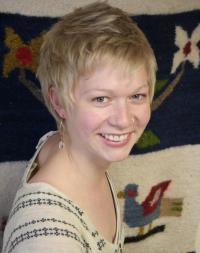 “I’m bringing my background in medical anthropology into my personal experiences in Nepal and the experiences shared with me through narratives,” said senior Cailin Marsden (right), who is doing her Plan on cross-cultural approaches to childbirth. She spent the fall semester in Nepal on a program with the School for International Training, exploring the history and socioeconomics of Tibetan refugee communities. For her independent project, she interviewed village families about their birth experiences. “I’m interested in learning about the greater health care system in Nepal and what maternal health care looks like, especially in rural settings.”
“I’m bringing my background in medical anthropology into my personal experiences in Nepal and the experiences shared with me through narratives,” said senior Cailin Marsden (right), who is doing her Plan on cross-cultural approaches to childbirth. She spent the fall semester in Nepal on a program with the School for International Training, exploring the history and socioeconomics of Tibetan refugee communities. For her independent project, she interviewed village families about their birth experiences. “I’m interested in learning about the greater health care system in Nepal and what maternal health care looks like, especially in rural settings.”
Art faculty members Tim Segar and Cathy Osman presented a show of their work in January and February at the Catherine Dianich Gallery in Brattleboro. Tim shared more painting and drawing than usual, along with two bronze castings, while Cathy showed paintings on clay board and a relief sculpture. Their show overlapped with “Four Eyes: Art from Potash Hill,” a show including Cathy, Tim, photography professor John Willis and ceramics professor Martina Lantin, at the Brattleboro Museum and Art Center (Potash Hill, Winter 2012). Tim said, “The two shows combined provided a unique opportunity to see a broad range of work by these artists made at various times over their careers.”
In April, philosophy professor William Edelglass gave the keynote address at Indiana University Southeast, part of their yearlong program on climate change, as well as a talk on Indian Buddhist philosophy. His address was called “Are We Morally Responsible for Climate Change?” “Even if the consequences of my own daily actions are negligible, I bear responsibility for the suffering that results from climate change when cumulatively the consequences of our actions are catastrophic,” William said. This is also the subject of his chapter in Facing Nature: Levinas and Environmental Philosophy, a book he co-edited, published by Duquesne University Press this year. William was also recently elected to the executive committee of the International Association of Environmental Philosophy.
“I realized that if I’m going to be studying international journalism as a means of human rights observation and democracy, I should probably get out of the United States,” said junior Sean Pyles (right). He spent the fall 2011 semester at John Cabot University, an American school based in Rome, taking classes in Writing for Advocacy and Television and Democracy. “The latter was essentially a crash course in the corruption of Italy’s media and the life of Silvio Berlusconi,” said Sean, who was in Italy when the prime minister was ousted. “I was feeling frustrated with the lack of democratic media around me, so I started a newspaper as a backlash. I learned the impact of journalistic activism and the importance of a free media for a functional democracy.”
Senior Cait Charles spent the fall 2011 semester in Nepal, studying Buddhism at a school located in a Tibetan Buddhist monastery, with some of the classes taught by accomplished scholar-monks. She followed this with a trip to India to visit Buddhist pilgrimage sites, including Bodhgaya, where the Buddha reportedly attained enlightenment. “I attended the 32nd Kalachakra, an event during which the Dalai Lama gives 11 days of teachings, rituals and empowerments,” said Cait. “It was ridiculously crowded; hundreds of thousands of people from all over the world came and flooded this tiny town that normally holds 30,000 people.” She spent the rest of the spring and summer visiting “ecovillages” in Thailand and Europe, part of her Plan research on the social, ecological, economic and cultural/worldview dimensions of sustainability.
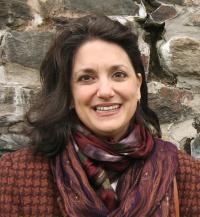 In April, Susie Bellici (right) traveled to Iraq, under the auspices of the state department and World Learning, to facilitate training at a conference for the Iraqi Young Leaders Exchange Program. IYLEP is a program that enables Iraqi students to study at American institutions, develop leadership skills and build action plans to strengthen the future of Iraq. “Training from 8 to 5 was tiring, but these students were amazingly inspiring,” said Susie, who is the associate director of world studies at Marlboro. “They are ranked in the top 1 percent of Iraqi university students—for activism, civic engagement and academics—so their conversations were thoughtful, passionate and knowledgeable. I was privileged to be there.”
In April, Susie Bellici (right) traveled to Iraq, under the auspices of the state department and World Learning, to facilitate training at a conference for the Iraqi Young Leaders Exchange Program. IYLEP is a program that enables Iraqi students to study at American institutions, develop leadership skills and build action plans to strengthen the future of Iraq. “Training from 8 to 5 was tiring, but these students were amazingly inspiring,” said Susie, who is the associate director of world studies at Marlboro. “They are ranked in the top 1 percent of Iraqi university students—for activism, civic engagement and academics—so their conversations were thoughtful, passionate and knowledgeable. I was privileged to be there.”
“I use photography, teaching and working with others as a means to try and see how I fit into the world, attempting to share with others in our search for value and meaning,” said John Willis, photography professor. His presentation in April, “How Might We Use Artistic Practice in Service?” was part of an academic speaker series called Art, Empathy and Social Change, held at Landmark College this spring semester. “I believe I gain as much as, if not more than, my subjects by spending time with them and collaborating within the artistic process. I only hope my presence and work can also be beneficial to those I work with.” Philosophy professor Meg Mott was featured in February, with a talk about extending rights to natural objects titled “On the Emancipation of Eagles."
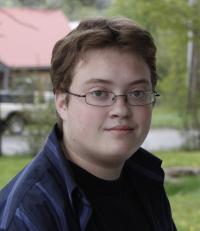 In April, the annual Tolkien conference at the University of Vermont brought J.R.R. fans from around New England to learn from eminent scholars about “Tolkien’s Bestiary.” These scholars included Marlboro sophomore Ray Saxon (right), who presented a paper titled “Manwë’s Messengers: The Role of Eagles in Middle Earth.” “I found that there are many commonly held misconceptions about the eagle’s role in Tolkien’s stories,” said Ray, whose paper explored the author’s true intentions in the matter. “The audience was very receptive, despite the fact that I was an undergraduate speaking alongside professors and independent scholars. I am so honored to have been given this opportunity, and proud to have represented Marlboro College.”
In April, the annual Tolkien conference at the University of Vermont brought J.R.R. fans from around New England to learn from eminent scholars about “Tolkien’s Bestiary.” These scholars included Marlboro sophomore Ray Saxon (right), who presented a paper titled “Manwë’s Messengers: The Role of Eagles in Middle Earth.” “I found that there are many commonly held misconceptions about the eagle’s role in Tolkien’s stories,” said Ray, whose paper explored the author’s true intentions in the matter. “The audience was very receptive, despite the fact that I was an undergraduate speaking alongside professors and independent scholars. I am so honored to have been given this opportunity, and proud to have represented Marlboro College.”
Spanish language professor Rosario de Swanson’s work on the literature of Equatorial Guinea (Potash Hill, Summer 2011) has been published as part of a United Nations Project to redress the rights of Afrodescendants, as people of African descent are called in Latinoamerica. Afrodescendencia: Aproximaciones contemporáneas desde América Latina y el Caribe recovers much of the forgotten history of these populations in Argentina, Brazil, Colombia, Mexico, Central America and the Caribbean. Rosario’s article examines women’s oppression in Ekomo, the first novel written by a woman in Equatorial Guinea. “My article is intended to shed light within Latin America on the literature, culture and arts of Equatorial Guinea,” said Rosario. “This is important because many of the slaves brought to Latin America came from the general region where Guinea is located.”
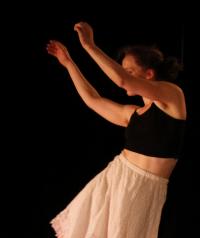 “A dance student at Marlboro is not like a dance student anywhere else,” said Cookie Harrist ’12 (right), who was chosen for a national conference gala performance at the John F. Kennedy Center for the Performing Arts in Washington, D.C. “We constantly question why we dance the way we dance.” The solo dance Cookie choreographed, titled “Present Present Present,” is an ambitious three-part piece that peels back the layers of artifice separating dancer from audience. Cookie brought “Present Present Present” to the 2012 National College Dance Festival, held on May 25 to 27, a biennial event showcasing the outstanding quality of choreography and performance created on college and university campuses across the country.
“A dance student at Marlboro is not like a dance student anywhere else,” said Cookie Harrist ’12 (right), who was chosen for a national conference gala performance at the John F. Kennedy Center for the Performing Arts in Washington, D.C. “We constantly question why we dance the way we dance.” The solo dance Cookie choreographed, titled “Present Present Present,” is an ambitious three-part piece that peels back the layers of artifice separating dancer from audience. Cookie brought “Present Present Present” to the 2012 National College Dance Festival, held on May 25 to 27, a biennial event showcasing the outstanding quality of choreography and performance created on college and university campuses across the country.
Hot on the heels of Drew Tanabe ’12, who was in Japan when it was rocked by the tsunami and resulting nuclear disaster last year (Potash Hill, Summer 2011), three students pursued their studies in Japan this year. In the fall semester, senior Gordie Morse went to Nagasaki and stayed with a host family while going to classes at the Nagasaki University of Foreign Studies. He attended daily Japanese language classes taught entirely in Japanese, by native speakers, as well as courses on Japanese history, culture, society and business management. “While Nagasaki is a city, it’s not as bustling or crowded as major cities in the United States, so it was a comfortable place to live in,” said Gordie. “I have great memories of talking to the native Japanese who lived there; I gained an appreciation for how foreigners are viewed in their communities and how their society differs from our own.” Meanwhile, senior Dane Fredericks was in Kyoto, the center of traditional culture in Japan, brimming with 2,000 Buddhist temples and monasteries. He participated in Antioch Education Abroad’s program on Japanese Buddhist traditions, which included learning some Japanese and exploring the diverse cultural expressions of Japanese Buddhism, from flower arranging to meditation. Dane’s independent research project focused on the burakumin, descendants of outcast communities from the feudal era who continue to be stigmatized and discriminated against. “People there prefer not to talk about them,” said Dane. “It’s all swept under a rug.” Senior Alek Jaunzemis (below) lived in Tokyo, splitting his time between attending classes at Temple University’s Japan campus and traveling all over Japan researching his Plan of Concentration on Japanese baseball. “I set myself some ambitious goals, such as interviewing players and journalists as well as representatives from the professional league, and I met most of them,” said Alek. “My favorite adventures included getting a press badge for the Tokyo Dome, which allowed me to interview players in the dugout during their practice, and catching an autographed, game-winning ball at a game in Chiba.”
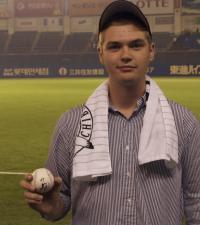 For more information, see:
For more information, see:
Ellen McCulloch-Lovell
Cailin Marsden
William Edelglass
Susie Bellici
Rosario de Swanson
Cookie Harrist
Or be sure to get the latest scoop on Potash Hill at these sites:
Potash Phil
Facebook
YouTube
Twitter
Commencement 2012
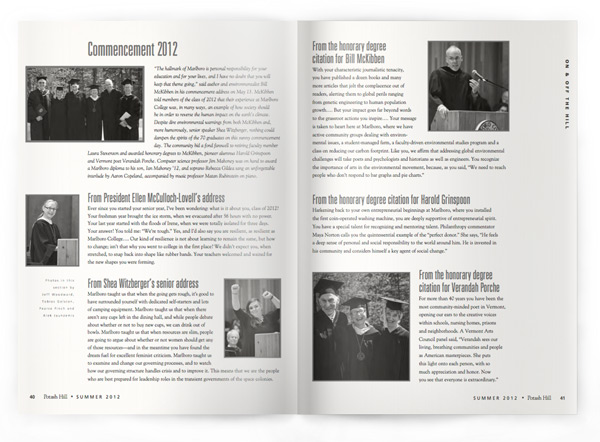
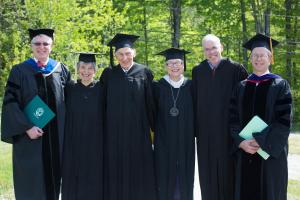 "The hallmark of Marlboro is personal responsibility for your education and for your lives, and I have no doubt that you will keep that theme going,” said author and environmentalist Bill McKibben in his commencement address on May 13. McKibben told members of the class of 2012 that their experience at Marlboro College was, in many ways, an example of how society should be in order to reverse the human impact on the earth’s climate. Despite dire environmental warnings from both McKibben and, more humorously, senior speaker Shea Witzberger, nothing could dampen the spirits of the 70 graduates on this sunny commencement day. The community bid a fond farewell to retiring faculty member Laura Stevenson and awarded honorary degrees to McKibben, pioneer alumnus Harold Grinspoon and Vermont poet Verandah Porche. Computer science professor Jim Mahoney was on hand to award a Marlboro diploma to his son, Ian Mahoney ’12, and soprano Rebecca Gildea sang an unforgettable interlude by Aaron Copeland, accompanied by music professor Matan Rubinstein on piano.
"The hallmark of Marlboro is personal responsibility for your education and for your lives, and I have no doubt that you will keep that theme going,” said author and environmentalist Bill McKibben in his commencement address on May 13. McKibben told members of the class of 2012 that their experience at Marlboro College was, in many ways, an example of how society should be in order to reverse the human impact on the earth’s climate. Despite dire environmental warnings from both McKibben and, more humorously, senior speaker Shea Witzberger, nothing could dampen the spirits of the 70 graduates on this sunny commencement day. The community bid a fond farewell to retiring faculty member Laura Stevenson and awarded honorary degrees to McKibben, pioneer alumnus Harold Grinspoon and Vermont poet Verandah Porche. Computer science professor Jim Mahoney was on hand to award a Marlboro diploma to his son, Ian Mahoney ’12, and soprano Rebecca Gildea sang an unforgettable interlude by Aaron Copeland, accompanied by music professor Matan Rubinstein on piano.
From President Ellen McCulloch-Lovell’s address 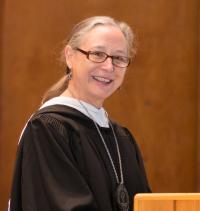 Ever since you started your senior year, I’ve been wondering: what is it about you, class of 2012? Your freshman year brought the ice storm, when we evacuated after 56 hours with no power. Your last year started with the floods of Irene, when we were totally isolated for three days. Your answer? You told me: “We’re tough.” Yes, and I’d also say you are resilient, as resilient as Marlboro College…. Our kind of resilience is not about learning to remain the same, but how to change; isn’t that why you went to college in the first place? We didn’t expect you, when stretched, to snap back into shape like rubber bands. Your teachers welcomed and waited for the new shapes you were forming.
Ever since you started your senior year, I’ve been wondering: what is it about you, class of 2012? Your freshman year brought the ice storm, when we evacuated after 56 hours with no power. Your last year started with the floods of Irene, when we were totally isolated for three days. Your answer? You told me: “We’re tough.” Yes, and I’d also say you are resilient, as resilient as Marlboro College…. Our kind of resilience is not about learning to remain the same, but how to change; isn’t that why you went to college in the first place? We didn’t expect you, when stretched, to snap back into shape like rubber bands. Your teachers welcomed and waited for the new shapes you were forming.
From Shea Witzberger’s senior address 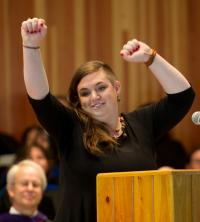 Marlboro taught us that when the going gets rough, it’s good to have surrounded yourself with dedicated self-starters and lots of camping equipment. Marlboro taught us that when there aren’t any cups left in the dining hall, and while people debate about whether or not to buy new cups, we can drink out of bowls. Marlboro taught us that when resources are slim, people are going to argue about whether or not women should get any of those resources—and in the meantime you have found the dream fuel for excellent feminist criticism. Marlboro taught us to examine and change our governing processes, and to watch how our governing structure handles crisis and to improve it. This means that we are the people who are best prepared for leadership roles in the transient governments of the space colonies.
Marlboro taught us that when the going gets rough, it’s good to have surrounded yourself with dedicated self-starters and lots of camping equipment. Marlboro taught us that when there aren’t any cups left in the dining hall, and while people debate about whether or not to buy new cups, we can drink out of bowls. Marlboro taught us that when resources are slim, people are going to argue about whether or not women should get any of those resources—and in the meantime you have found the dream fuel for excellent feminist criticism. Marlboro taught us to examine and change our governing processes, and to watch how our governing structure handles crisis and to improve it. This means that we are the people who are best prepared for leadership roles in the transient governments of the space colonies.
From the honorary degree citation for Bill McKibben 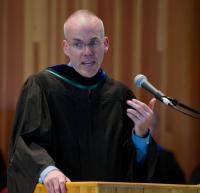 With your characteristic journalistic tenacity, you have published a dozen books and many more articles that jolt the complacence out of readers, alerting them to global perils ranging from genetic engineering to human population growth…. But your impact goes far beyond words to the grassroot actions you inspire…. Your message is taken to heart here at Marlboro, where we have active community groups dealing with environmental issues, a student-managed farm, a faculty-driven environmental studies program and a class on reducing our carbon footprint. Like you, we affirm that addressing global environmental challenges will take poets and psychologists and historians as well as engineers. You recognize the importance of arts in the environmental movement, because, as you said, “We need to reach people who don’t respond to bar graphs and pie charts.”
With your characteristic journalistic tenacity, you have published a dozen books and many more articles that jolt the complacence out of readers, alerting them to global perils ranging from genetic engineering to human population growth…. But your impact goes far beyond words to the grassroot actions you inspire…. Your message is taken to heart here at Marlboro, where we have active community groups dealing with environmental issues, a student-managed farm, a faculty-driven environmental studies program and a class on reducing our carbon footprint. Like you, we affirm that addressing global environmental challenges will take poets and psychologists and historians as well as engineers. You recognize the importance of arts in the environmental movement, because, as you said, “We need to reach people who don’t respond to bar graphs and pie charts.”
From the honorary degree citation for Harold Grinspoon 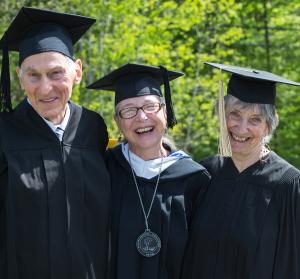 Harkening back to your own entrepreneurial beginnings at Marlboro, where you installed the first coin-operated washing machine, you are deeply supportive of entrepreneurial spirit. You have a special talent for recognizing and mentoring talent. Philanthropy commentator Maya Norton calls you the quintessential example of the “perfect donor.” She says, “He feels a deep sense of personal and social responsibility to the world around him. He is invested in his community and considers himself a key agent of social change.”
Harkening back to your own entrepreneurial beginnings at Marlboro, where you installed the first coin-operated washing machine, you are deeply supportive of entrepreneurial spirit. You have a special talent for recognizing and mentoring talent. Philanthropy commentator Maya Norton calls you the quintessential example of the “perfect donor.” She says, “He feels a deep sense of personal and social responsibility to the world around him. He is invested in his community and considers himself a key agent of social change.”
From the honorary degree citation for Verandah Porche
For more than 40 years you have been the most community-minded poet in Vermont, opening our ears to the creative voices within schools, nursing homes, prisons and neighborhoods. A Vermont Arts Council panel said, “Verandah sees our living, breathing communities and people as American masterpieces. She puts this light onto each person, with so much appreciation and honor. Now you see that everyone is extraordinary.”
For full transcripts of addresses and citations, a list of 2012 graduates and their Plans of Concentration as well as photos and videos, go to www.marlboro.edu/news/commencement/2012.
Climate of Hope: From Bill McKibben’s address
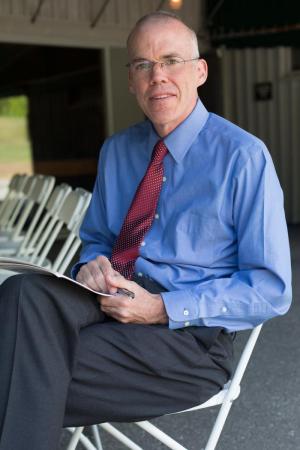 I am so grateful that the year that began with Irene for you all ends on this beautiful, glorious day. It must be said that even beautiful, glorious days now carry a kind of freight that they didn’t in the past. I don’t know about you, but that March heat wave that we had—those beautiful days when we were all out wandering around in shorts and t-shirts— at the back of our minds we had that sense that this was not how it should be. And it isn’t how it should be.
I am so grateful that the year that began with Irene for you all ends on this beautiful, glorious day. It must be said that even beautiful, glorious days now carry a kind of freight that they didn’t in the past. I don’t know about you, but that March heat wave that we had—those beautiful days when we were all out wandering around in shorts and t-shirts— at the back of our minds we had that sense that this was not how it should be. And it isn’t how it should be.
The burden of what we have done to this world lays a little heavy on the older among us, as we look at you. The great wish of people, I think, is to pass on to their children and grandchildren a world in better shape than the one that they were born into, and we have failed at that task. The world is not in as good shape as it was when we were born…. The most important thing that has happened so far in your life is that this planet left what scientists call the Holocene, a 10,000-year period of benign climatic stability that underwrote the rise of human civilization. Sometime in the last 20 years we crossed some invisible line to what comes next. The only question now is how far down that path we will go, and that will largely be up to you.
It is not just the physical world that, in certain ways, is less than it should be. Our society, too, is in certain ways not what we would hope. Fifty years ago, the average American had twice as many close friends, statistically, as the average American today. It’s a very, very large loss, and it explains why statistically we find that people in our society are nowhere near as happy as they were, no longer feel as satisfied with their lives as they did some decades ago. These things aren’t ideological, they’re physics and chemistry and sociology, and they’re not determinant either. The question is how to turn them around and keep them from getting worse, and then reverse them: to build a world that you can leave with somewhat more pride than we do.
The hallmark of Marlboro is personal responsibility for your education and for your lives, and I have no doubt that you will keep that theme going in all the ways that one can be responsible to one’s community and to one’s earth—that you will do those things you can. I want to add, however, that as you go forward you also need to (and I know you already do) think about it well beyond the bounds of your own individual selves and think a lot about the role that you can play in building communities strong enough to really turn things around.
I deal with climate change, the most pressing problem humans have ever faced. It is very clear why we’re making no progress. The fossil fuel industry, the richest enterprise humans have ever engaged in, has been able to use that financial power to block change. They will always have more money than the rest of us, and so, if we’re going to turn them around, we will need to find other currencies to work in. Those are mostly the currencies of community, passion, spirit, creativity: the things that build movements. It has been fun to watch these movements build over the last few years. We started 350.org four years ago with myself and seven seniors at Middlebury—people exactly like you—and now it’s grown to be this great, grassroots climate change movement around the world, active in every country but North Korea. And we may not get there anytime soon.
One of the things I always think when I’m at a college, but especially here, is that while you’ve been busy studying important things, the real thing you’ve been studying has less to do with the various disciplines…than it does with the community in which you’re embedded. When people come back to the place where they had their college years, and when they say, “Those were the best years of my life,” part of what they’re remembering is how much they enjoyed their classes. But mostly what they’re remembering is the incredible rightness of being in a place where, for four years, you get to live the way that most human beings have lived for most of human history—in close physical and emotional proximity to a lot of other people. And sometimes that’s a complete pain, you know? But most of the time it’s magnificent to always have people to bounce ideas off of; that’s what we evolved to do, and the wrong turn we took as a society was to get away from that.
The reason that we have half as many friends as people 50 years ago is that we spent the intervening five decades hard at work on the project of building bigger houses farther apart from each other. And that’s also the reason why we pour so much carbon into the atmosphere. One of the ironies of higher education, or education in general, is that we bring you here and you have this wonderful community, but one of the subtexts is that you now are equipped to go out and earn enough money so that you never have to live this way again. But there is no absolute requirement that you do that, and if you’re wise, and I think you are, you’ll look for ways all along to try and take some of this community and make it work in the rest of your lives.
I’ve got to tell you the truth, which is that I don’t know if we’re going to win this epic fight about the climate. There are scientists, as you know, who think we’ve waited rather late to get started, and there are political scientists who think the odds are simply too great and there’s too much money on the other side. And they might be right…. But I do know that all around the world, including in places that have done nothing to cause this problem, there are people ready and willing to fight in all the ways they can. It is always such an honor for me to get to be in those communities. It is such an honor to get to be in this one and say that I very much look forward, in the years ahead, to just getting to stand side by side with you and take on these problems and see where we go. There are no guarantees, except that involvement and engagement and the kind of love that it comes from is the thing that makes all of this worthwhile.
Academic Prizes
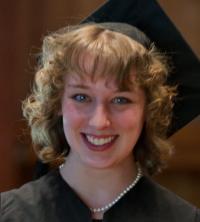 The Rebecca Willow Prize, established in 2008 in memory of Rebecca Willow, class of 1995, is awarded to a student whose presence brings personal integrity and kindness to the community and who unites an interest in human history and culture with a passion for the natural world. Brandon Willits and Jacquelyn Ward
The Rebecca Willow Prize, established in 2008 in memory of Rebecca Willow, class of 1995, is awarded to a student whose presence brings personal integrity and kindness to the community and who unites an interest in human history and culture with a passion for the natural world. Brandon Willits and Jacquelyn Ward
The Audrey Alley Gorton Award is given in memory of Audrey Gorton, Marlboro alumna and member of the faculty for 33 years, to the student who best reflects the Gorton qualities of: passion for reading, an independence of critical judgment, fastidious attention to matters of style and a gift for intelligent conversation. Rebecca Gildea and Abigail Weiss
 The Hilly van Loon Prize, established by the class of 2000 in honor of Hilly van Loon, Marlboro class of 1962 and staff member for 23 years, is given to the senior who best reflects Hilly’s wisdom, compassion, community involvement, quiet dedication to the spirit of Marlboro College, joy in writing and celebration of life. Casey Friedman and Eleanor Roark
The Hilly van Loon Prize, established by the class of 2000 in honor of Hilly van Loon, Marlboro class of 1962 and staff member for 23 years, is given to the senior who best reflects Hilly’s wisdom, compassion, community involvement, quiet dedication to the spirit of Marlboro College, joy in writing and celebration of life. Casey Friedman and Eleanor Roark
The William Davisson Prize, created by the Town Meeting Selectboard and named in honor of Will Davisson, who served as a faculty member for 18 years and as a trustee for 22 years, is awarded to one or more students for extraordinary contributions to the Marlboro community. Cookie Harrist and Jack Rossiter-Munley
The Ryan Larsen Memorial Prize was established in 2006 in memory of Ryan Jeffrey Larsen, who felt transformed by the opportunities to learn and grow within the embrace of the Marlboro College community. It is awarded annually to a junior or senior who best reflects Ryan’s qualities of philosophical curiosity, creativity, compassion and spiritual inquiry. Alexia Boggs, Jonathan Wood and Trevor Rickenbrode
The Helen W. Clark Prize is awarded by the visual arts faculty for the best Plan of Concentration in the fine arts. Joanna Moyer-Battick and Mara Eagle The Sally and Valerio Montanari Theater Prize is awarded annually to a graduating senior who has made the greatest overall contribution to the pursuit of excellence in theater production. Sarah Grace Leathrum
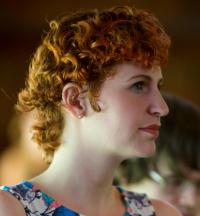 The Dr. Loren C. Bronson Award for Excellence in Classics, established by the family of Loren Bronson, class of 1973, is awarded to encourage undergraduate work in classics. Chester Harper
The Dr. Loren C. Bronson Award for Excellence in Classics, established by the family of Loren Bronson, class of 1973, is awarded to encourage undergraduate work in classics. Chester Harper
The Roland W. Boyden Prize is given by the humanities faculty to a student who has demonstrated excellence in the humanities. Roland Boyden was a founding faculty member of the college, acting president, dean and trustee. Emma Goldhammer
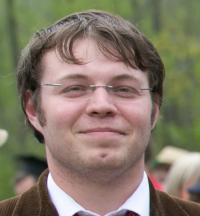 The Buck Turner Prize is awarded to a student who demonstrates excellence in the natural sciences, who uses interdisciplinary approaches and who places his or her work in the context of larger questions. Kathryn Lyon, Clare Riley and Alex Hiam
The Buck Turner Prize is awarded to a student who demonstrates excellence in the natural sciences, who uses interdisciplinary approaches and who places his or her work in the context of larger questions. Kathryn Lyon, Clare Riley and Alex Hiam
The Freshman/Sophomore Essay Prize is given annually for the best essay written for a Marlboro course. Aidan Keeva
The Robert E. Engel Award, established in 2011 in honor of Bob Engel, Marlboro faculty member for 36 years, is awarded to a student who demonstrates Bob’s passion for the natural world and his keen powers of observation and inquiry as a natural historian. Joella Simons Adkins
Alumni News
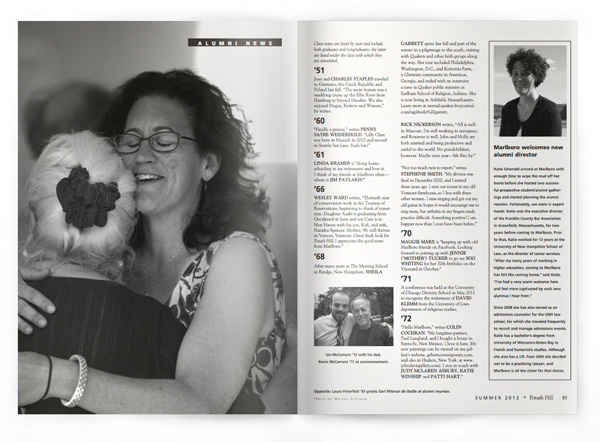
65 years of unfettered thinking
 On a beautiful, sunny weekend in May, 140 alumni and their families flocked to Potash Hill for a celebration of Marlboro community spirit. Highlights included cheese tasting with Wendy Levy ’97, learning about getting published with Deni Bechard ’97, and a wildlife-tracking walk with George Lioniak ’05. Anthropology professor Carol Hendrickson led a workshop on making illustrated journals, and biology professor Bob Engel shared the difference between the songs of a red-eyed vireo and a solitary vireo. Will Brooke-deBock ’87 and C.J. Churchill ’91 led a very touching tribute to retiring sociology professor Jerry Levy. The event was a huge success, thanks to the tireless work of new alumni director Katie Schendel, who specifically ordered the weather. Photos by Adam Keller ’10 and Marcus DeSieno ’10
On a beautiful, sunny weekend in May, 140 alumni and their families flocked to Potash Hill for a celebration of Marlboro community spirit. Highlights included cheese tasting with Wendy Levy ’97, learning about getting published with Deni Bechard ’97, and a wildlife-tracking walk with George Lioniak ’05. Anthropology professor Carol Hendrickson led a workshop on making illustrated journals, and biology professor Bob Engel shared the difference between the songs of a red-eyed vireo and a solitary vireo. Will Brooke-deBock ’87 and C.J. Churchill ’91 led a very touching tribute to retiring sociology professor Jerry Levy. The event was a huge success, thanks to the tireless work of new alumni director Katie Schendel, who specifically ordered the weather. Photos by Adam Keller ’10 and Marcus DeSieno ’10
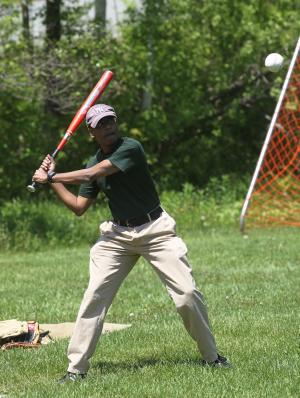
Class notes are listed by year and include both graduates and nongraduates; the latter are listed under the class with which they are associated.
’51
Joan and CHARLES STAPLES traveled to Germany, the Czech Republic and Poland last fall. “The main feature was a weeklong cruise up the Elbe River from Hamburg to beyond Dresden. We also enjoyed Prague, Krakow and Warsaw,” he writes.
’60
“Finally a granny,” writes PENNY SAYRE WEIDERHOLD. “Lilly Clare was born in Munich in 2010 and moved to Seattle last June. Such fun!”
’61
LINDA KRAMER is “doing homeschooling in my retirement and love it. I think of my friends at Marlboro often— where is JIM PAVLAKIS?”
’66
WESLEY WARD writes, “Thirtieth year of conservation work at the Trustees of Reservations; beginning to think of transition. Daughter Audri is graduating from Occidental in June and son Cary is in New Haven with his son, Kofi, and wife, Natasha Spencer. Mother, 98, still thrives in Vernon, Vermont. Great fresh look for Potash Hill; I appreciate the good news from Marlboro.”
’68
After many years at The Meeting School in Rindge, New Hampshire, SHEILA GARRETT spent last fall and part of the winter in a pilgrimage to the south, visiting with Quakers and other faith groups along the way. Her tour included Philadelphia, Washington, D.C., and Koinonia Farm, a Christian community in Americus, Georgia, and ended with an intensive course in Quaker public ministry at Earlham School of Religion, Indiana. She is now living in Ashfield, Massachusetts. Learn more at monad-quaker.livejournal. com/tag/sheila%20garrett.
RICK NICKERSON writes, “All is well in Missouri. I’m still working in aerospace, and Roxanne is well. John and Molly are both married and being productive and useful to the world. No grandchildren, however. Maybe next year—life flies by!”
“Not too much new to report,” writes STEPHENIE SMITH. “My divorce was final in December 2010, and I retired three years ago. I rent out rooms in my old Vermont farmhouse, so I live with three other women. I miss singing and got out my old guitar in hopes it would encourage me to sing more, but arthritis in my fingers made practice difficult. Something positive? I am happier now than I ever have been before.”
Gilbert Palley ’69: Somewhere in Nowhere, Arizona
So there I was, an aging, crusty, gray-haired, hippie ER doc, working at Fort Defiance Indian Hospital on the Navajo Reservation in (really) Nowhere, Arizona. I was attending our first “book club” with maybe 15 docs, nurses, dentists and pharmacists. The book was Hunger Games.
There was a young woman there with her mother, a hospital OB nurse. She looked to be between, eh, 14 and 25 (you know the look and age). I’m introduced to Eleanor, age 19. Okay, everybody else there I knew, so I started talking to her. Small talk... pre-book-club talk. She said she’s in college. Curious, I asked where, and she said the unbelievable phrase, “Oh I go to a very small college in Vermont...Marlboro.
Well, knock me over with a feather. Picking my jaw up off the floor, I asked her to quickly put down her teacup. She looked at me like I was crazy, but obliged. I then gave her an enormous hug and told her I graduated from Marlboro in 1969 (she thinking, initially, best shot was that I had actually heard of the place). We then spent the next 45 minutes talking about old and new Marlboro and reveling about an old-time love and a newfound one, of autumn leaves and seminars, of a place “at the end of a road on the top of a hill.” Thanks Marlboro—and Eleanor... never stop dancing.
’70
MAGGIE MARX is “keeping up with old Marlboro friends on Facebook. Looking forward to joining up with JENNIE (‘Mother’) TUCKER to go see SOO WHITING for her 70th birthday on the Vineyard in October.”
’71
A conference was held at the University of Chicago Divinity School in May 2011 to recognize the retirement of DAVID KLEMM from the University of Iowa department of religious studies.
’72
“Hello Marlboro,” writes COLIN COCHRAN. “My longtime partner, Paul Langlund, and I bought a house in Santa Fe, New Mexico. I love it here. My new paintings can be viewed on my gallery’s website, gebertcontemporary.com, and also in Hudson, New York, at www. johndavisgallery.com/. I stay in touch with JUDY McLAREN ASBURY, KATIE WINSHIP and PATTI HART.”
Wendy Pomeroy ’77: Saving land in Kittery
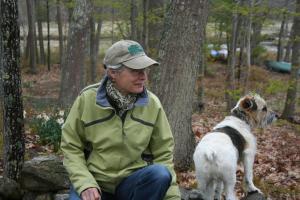 Last fall, landscape designer Wendy Pomeroy joined the board of directors of the Kittery Land Trust (KLT), an organization that promotes land conservation in Kittery, Maine, where Wendy has lived with her family since 2003. “Being on the board of the Kittery Land Trust has allowed me to help preserve some of the vital natural areas in our small town,” said Wendy. “These properties are home to wildlife and native plants, all critical in keeping the balance of this precarious and fragile landscape.”
Last fall, landscape designer Wendy Pomeroy joined the board of directors of the Kittery Land Trust (KLT), an organization that promotes land conservation in Kittery, Maine, where Wendy has lived with her family since 2003. “Being on the board of the Kittery Land Trust has allowed me to help preserve some of the vital natural areas in our small town,” said Wendy. “These properties are home to wildlife and native plants, all critical in keeping the balance of this precarious and fragile landscape.”
Wendy studied sculpture at Marlboro and then landscape architecture, establishing her own landscape design business in Cambridge, Massachusetts, before moving to Kittery with her family. There, she collaborates with her husband, architect Deane Rykerson, designing gardens using as much native plant material as possible, and is back into doing sculpture again—welding. She also writes articles for the KLT newsletter on native plants that grow in the area.
“I thrive on being outdoors in relative wilderness,” said Wendy. “I love observing the teeny groundcovers that cling to the earth, and admire the huge old oaks that have been here for years and have existed through the agricultural changes of this landscape. It is satisfying to assist in the preservation of this incredible and magnificent living world.” Learn more at www.ryarchitecture.com.
’80
SOPHIE BLACK’s poem “Somewhere in New Jersey Is the Center” appeared in the March 23 edition of The New Yorker, and an interview with her appeared on the Book Bench section of the magazine’s blog. Sophie’s third book of poetry will be published next year.
’81
“HARRY HUSSEY, his wife, Tami, and I went down to New York City in February,” writes TONY SAVOIE, “to hear LLOYD KING’s band, Funkadesi. In addition to Lloyd and BETH TYLER ’83, MARK ’80 and HOLLY WATERBURY MANLEY ’82 were there, and JOHN GRAY ’78. A fun mini-reunion, of course, and to finally hear Funkadesi live was a real treat. And after seeing Lloyd strutting his stuff in a form-fitting black tank top, I have to say the man has aged well.”
’82
LESLIE BROWN writes, “Aside from starting a business as a kitchen and bath designer, my husband, Sandy, and I are now the only commercial growers of blueberries in Colorado, starting a pick-your-own farm that will open next year.”
“Hello old friends,” writes REBECCA JERVIS LEEMAN from Albuquerque. “I’ve been out of touch. Three preteen boys are keeping me busy, and beyond all of that I am very plugged into my midwifery practice, working in a tertiary care hospital where a lot of high-risk pregnancy situations arrive and arise—it is a job and a half to keep the normal labor normal. To relax, I scuba dive (though not in New Mexico) and go out dancing. Hi LAURIE. And a long shot: Hello TIM PRATT.”
KATHERINE PAQUIN FREELAND has spent some recent weekends with “the fabulous women of Random North and South: ABBY JACOBSON, MELISSA MATTES ’83 and GERALDINE McPHEE ’83.”
ABBY JACOBSON writes, “Lots of changes here, which include a geographical move to Providence, Rhode Island, where I’ve been able to catch up with GERALDINE McPHEE, TREVOR ALLEN (and their two grown sons), MARK BONN and his wife, Cindy, and their two children. On two occasions, Gerry, Trevor and I have held a mini Marlboro reunion that included reconnecting with MELISSA MATTES and KATE PAQUIN FREELAND. Between all of us we have eight boys between the ages of 19 and 24. I’m still working in the field of psychology, gardening on the side, and have recently begun ushering at a local theater. I’m loving life on pavement and being able to walk to stores, theaters and museums. In my spare time I’m learning to navigate the public transportation system and learning all things Rhode Island. Would love to have Marlboro alums visit anytime. abby. jacobson.50@gmail.com.”
AMY KING and JOHN GILLIOM celebrated their 25th wedding anniversary in a quiet house. “The last kid has run away to college, leaving us with the time and energy to enjoy each other, our farm and our work. Amy is heading up early childhood literacy initiatives in our region, and John is teaching political science at Ohio University and has a new book, SuperVision, out in the fall.”
DAVID SKEELE is “still teaching acting and playwriting at Slippery Rock University (and having a great time doing it). I’m preparing to take our fourth show to Edinburgh, Scotland, while directing Electra and The Merchant of Venice.”
’85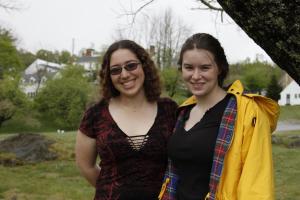 PETER CHANDLER (aka Chanman) sent news in March that the Jackson Hole Weekly announced the winners of its “Best of Jackson Hole 2012” poll—Best Musician, Gold: Peter Chandler; Best Local CD Release, Gold: Chanman Roots Band, “New Uprising”; Best Band Playing Original Music, Bronze: Chanman Roots Band.
PETER CHANDLER (aka Chanman) sent news in March that the Jackson Hole Weekly announced the winners of its “Best of Jackson Hole 2012” poll—Best Musician, Gold: Peter Chandler; Best Local CD Release, Gold: Chanman Roots Band, “New Uprising”; Best Band Playing Original Music, Bronze: Chanman Roots Band.
’94
TODD LYLES lives in Nashville, Tennessee, with his wife, Joelle. “It’s a great town—if you’re ever passing through, look me up.”
SKARRN RYVNINE has a daughter, Naomi Lenoir, born on December 18, 2011.
’95
KRISTIN ANDERSON, a nurse in the Brattleboro Memorial Hospital birthing center, travelled to Nicaragua with two colleagues in March to volunteer in a teaching hospital in Leon.
MARYA PLOTKIN is a senior monitoring and evaluation officer in Jhpiego’s Tanzania office. Jhpiego, an affiliate of Johns Hopkins University, is a nonprofit healthcare organization that works in developing countries to train health care workers in reproductive health and family planning.
LOREN TALBOT writes, “Hi all. Just wanted to share the news that I married my partner, Jacob Schuiten, this past January in Brooklyn. KIM ALLEN and CHRIS GROFF joined in the celebration. Beyond that, I’ve been working as the photo editor of The Week magazine for the past three years; fixing up the house that we bought in Bloomfield, New Jersey, around the same time; and finishing up my attic studio, where I have been working on collages and painting.”
’96
ELI FISHMAN and his wife are expecting their first child in October.
Jonathan Gitelson ’97: Showing at deCordova
 After almost 10 years living in Chicago, artist Jonathan Gitelson moved back to Vermont last year. He was welcomed with an exciting invitation to participate in the 2012 deCordova Biennial exhibition, in Lincoln, Massachusetts, from January to April, the premier survey of New England contemporary art. “I feel very fortunate to have been embraced here in my new home, and the biennial experience has introduced me to lots of artists living here on the east coast whose work I had not been previously familiar with,” said Jonathan. “Community has always been a very important part of my life as an artist, and inclusion in this exhibition has given me a big boost as a newcomer to the region.”
After almost 10 years living in Chicago, artist Jonathan Gitelson moved back to Vermont last year. He was welcomed with an exciting invitation to participate in the 2012 deCordova Biennial exhibition, in Lincoln, Massachusetts, from January to April, the premier survey of New England contemporary art. “I feel very fortunate to have been embraced here in my new home, and the biennial experience has introduced me to lots of artists living here on the east coast whose work I had not been previously familiar with,” said Jonathan. “Community has always been a very important part of my life as an artist, and inclusion in this exhibition has given me a big boost as a newcomer to the region.”
This year’s deCordova Biennial featured 23 artists and collaboratives. It occupied most of the museum and sculpture park, and went beyond to nearby communities through a series of public, off-site projects. Jonathan had three bodies of work on view at the exhibition: three custom-bound artist books, three pieces from his series “Dream Job,” and three full-scale photographs from the series “Items of Clothing Secretly Hidden by My Girlfriend (So I Wouldn’t Wear Them Anymore).” Jonathan’s upcoming events include a solo exhibition this fall at Galerie f5,6 in Munich. Learn more at www.thegit.net.
’97
DENI BECHARD’s family memoir, Cures for Hunger, is slated for publication this spring. His 2007 novel, Vandal Love, winner of the Commonwealth Writer’s Prize for best first book, will be out in paperback around the same time.
WENDY LEVY writes, “Hello everybody, especially JOHN BELL. I’m moving back to Brattleboro in February and leaving the New York City area (again). I just got a great job with Grafton Village Cheese Company. Yes, still working with cheese. All Marlboro friends, please look me up if you’re in town or coming to visit. So glad to be returning to Vermont.”
In a holiday letter from GARY and MELANIE KNIGHT GOTTLIEB ’02 we learned that Gary won an award from the Association for Recorded Sound Collections for his third book and an award from the Audio Engineering Society, where he was also elected to the board, for outstanding service this past year. He is now working in early education audio quality at stlaudio.org. Melanie is still the director of admissions at Webster University and vice president of the American Association of Collegiate Registrars and Admissions Officers. She traveled to Thailand, Switzerland and Germany last year, and is also a coach for Beachbody Fitness. Their daughter, Kyla, is in first grade at the French School of St. Louis Language Immersions Schools. Daughter Miranda had her Bat Mitzvah and is in eighth grade, where she is in honors chorus. And, last but not least, their dog Abbie took third place in her second dog show last year.
’99
“The fall of 2010 found us moving from our home in Stockholm, Maine, to a full-fledged farm in Caribou,” writes KATE QUINN-EASTER. “Our dream of having our own therapeutic riding center someday is in the works. Until then, we just have our little herd and are happy to be home. That same time also found me starting an accelerated master’s degree program through the Job Corps Executive Management Program at Minot State University in Minot, North Dakota. I spent eight months in online and video-based classes and two months in the very, very flooded town of Minot. By the middle of my time there, I had a 14-foot dike outside my dorm room window that was holding back the mighty Souris River. I received my Master of Science in Management and a Graduate Certificate in Knowledge Management in July 2011. I still work for Job Corps and am happy to be making a difference in the lives and futures of youth and young adults. If you are ever doing a trip north, look me up. We’re happy to host travelers any time.”
’01
KOLI SHTYLLA and his wife, Sarah, welcomed a son, Maks Lukas Roma-Shtylla, on January 30, 2012.
“Hello all,” writes SETH WINSOR. “My band has finally lined up a tour of Denmark and parts of Canada this summer, and at some point my partner and I are hoping to take the kids on a family vacation. I’m still continuing treatment for my condition, and I just want to extend my heartfelt thanks to all those who have supported us during this difficult time— much love and thanks to you all.”
Alumni panel talks about sustainability
On April 13, a group of four alumni with careers in sustainability talked with students and other community members about their professions and their trajectories after college. The panelists were Pietr van Loon ’88, Jeff Bower ’92, Molly MacLeod ’08 and Mary Westervelt, who will recieve an MBA from Marlboro College Graduate School this year.
“My professional background was in marketing in the financial services sector,” said Mary, who now offers consulting services to support the growth of small businesses in the slow food and clean energy sectors. “I was excited to leave that arena and use my skills to support the greater good. I am now in much greater alignment with the life I’ve always intended to lead.”
Pietr, on the other hand, got his Marlboro degree in forestry and worked with another Marlboro alumnus as a consulting forester right out of college. He is now stewardship forester for the Vermont Land Trust. Molly is a Ph.D. student in ecology and evolution at Rutgers University, where she is identifying patterns in plant-pollinator interactions to inform species conservation and restoration.
“Making a difference can be as big as passing legislation to as small as turning off a light switch,” said Jeff, who works with the nation’s largest solar power company to deploy commercial-scale systems. “There is room for everyone, and everyone can have an impact.” Through their many stories and perspectives, these alumni helped students see their way past obstacles they may encounter, and confirmed the recurring Marlboro wisdom of pursuing what they are passionate about.
’02
“I am currently in a master’s program for social work at Rutgers, graduating in May,” writes KERENZA REID. “MICHAEL (BLUMENFELD) just graduated with his Ph.D. in chemistry from the University of Arizona in 2011 and currently works as a senior researcher for Exxon Mobil.”
This winter CLAIR BIDWELL SMITH published The Rules of Inheritance (Penguin/Hudson Street), a memoir reflecting on the early death of her parents from cancer and the grieving that followed. Publisher’s Weekly said, “Smith’s prose possesses a blistering power, rendering this youthful memoir an affecting journey into loss.”
’03
Kelly and LEE COLLYER welcomed their daughter Clementine Eileen Collyer to the world on December 31, 2011. “She has a full head of hair and is already plotting about who to put up against the wall first when the revolution comes.”
’05
“All the best from Toronto,” writes ANTHONY SCHEIN. “Still working at a small public-sector union called AMAPCEO as executive assistant to the president. I was on leave for two months in 2011 to manage my brother Jonah’s successful campaign for provincial parliament in Ontario—likely my proudest achievement to date. I am now active in a campaign to elect the next leader of Canada’s NDP and leader of Her Majesty’s Loyal Opposition. Saw CAITLYYN PAXSON ’06 in Ottawa last April while visiting my sister REBECCA ’01. Enjoyed a visit this past summer from RACHEL FEDERLIN ’06 and MIA NOEL ’10. Looking forward to a visit from CHRISTIE BARCELOS ’05 in February. I dream of Marlboro.”
’06
From his mom, Joanne, we learn that ANDREW HAYES is still living in California, working in reality TV and at the Discovery Channel. His recent work includes Brides of Beverly Hills, Flip Men and music videos.
SUNNY HITT has been living and working in the Cambridge area, “dancing, teaching and enjoying life.” She spent last fall in Maine and then traveled to Southeast Asia in January 2012.
’07
After Marlboro, SARAH DOBBINS got a master’s in public health and a post-baccalaureate certificate in illustration from the School of the Museum of Fine Arts, Boston. Last year she moved to San Francisco to work as a medical illustrator, focusing on public health and community outreach. She also works at San Francisco General Hospital on clinical research projects in the areas of coagulopathy after trauma and violence injury prevention and research.
CHRISTIAN McCRORY writes, “After graduation, I enrolled in the Master of Arts in Teaching program at the School for International Training. It was there that I met one Melissa Bossio, a Canadian, who kindly consented to become my wife in June 2009. We taught English together in Kasaoka, Japan, lived briefly in Toronto and have now settled down in Middlesex, Vermont. We own a simple log home at the edge of Tangletown, betwixt a pig named Daisy and a handful of sheep. I am employed as a special education provider at the Buffalo Mountain School in Hardwick. I’m also extremely delighted to say that Melissa and I are expecting a daughter in April. I count my time at Marlboro as some of the finest years of my life. Thank you, professors and peers, for everything.”
“Hello Marlboro friends,” writes LILY SCHRANK GRAHAM. “I have been living outside of Boston with my husband, Forbes, and caring for my grandfather Putnam Flint for the past four years. I am still very active in my photography and am also involved in jewelry design. I make jewelry out of antique tin, and have done many craft fairs in the Boston area, as well as selling online. You can check out my photography and links to my jewelry site at www.lillianhelengraham.com. The big news is that I am pregnant. I am expecting the little one in early October and could not be more excited. Life is happening, and I am enjoying every minute. Please feel free to contact me via email at lillianhelengraham@gmail.com. I hope life is treating everyone well, and I look forward to hearing from you.”
’08
BRADY GODWIN is at the University of Wyoming, working toward a master’s degree in zoology and physiology and conducting fieldwork on river otters in the Green River basin. “When I crawl out of my tent in the morning and chase off a moose, or see a Wyoming sunset without another soul for miles, I think, ‘This is my job.’”
JAMIE PAUL is working as a technician and archivist for documentary photographer Rob Amberg and playing original folk songs in the Appalachian Mountains of North Carolina.
Marlboro welcomes new alumni director
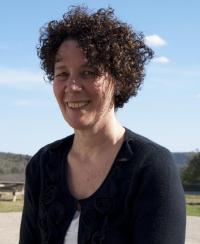 Katie Schendel arrived at Marlboro with enough time to wipe the mud off her boots before she hosted two successful prospective student/alumni gatherings and started planning the alumni reunion. Fortunately, we were in expert hands. Katie was the executive director of the Franklin County Bar Association in Greenfield, Massachusetts, for two years before coming to Marlboro. Prior to that, Katie worked for 13 years at the University of New Hampshire School of Law, as the director of career services.
Katie Schendel arrived at Marlboro with enough time to wipe the mud off her boots before she hosted two successful prospective student/alumni gatherings and started planning the alumni reunion. Fortunately, we were in expert hands. Katie was the executive director of the Franklin County Bar Association in Greenfield, Massachusetts, for two years before coming to Marlboro. Prior to that, Katie worked for 13 years at the University of New Hampshire School of Law, as the director of career services.
“After my many years of working in higher education, coming to Marlboro has felt like coming home,” said Katie. “I’ve had a very warm welcome here and feel more captivated by each new alumnus I hear from.”
Since 2008 she has also served as an admissions counselor for the UNH law school, for which she traveled frequently to recruit and manage admissions events. Katie has a bachelor’s degree from University of Wisconsin-Green Bay in French and humanistic studies. Although she also has a J.D. from UNH she decided not to be a practicing lawyer, and Marlboro is all the richer for that choice.
’10
From her mother, we learn that CAROLYN DRUMSTA is “officially a member of the 10-mile club, living in Brattleboro, zipping around in her Smartcar, looking for work and volunteering at Vermont Workers’ Center.”
In April, SOPHIA CLEARY and AMITY JONES returned to campus to share samples of new dances they are creating and talk about their lives as artists in New York City.
’11
EMILY FIELD is working as a shift supervisor at the St. Elizabeth Emergency Shelter in Santa Fe, New Mexico. “Everyone has a different story. For a Marlboro alum like me, someone who hates it when things get predictable, this is ideal.”
CHRISSY RAUDONIS writes, “I spent the summer working on Mount Mansfield in Vermont for the Green Mountain Club, and I am now interning at a farm in Tennessee while preparing for a 6- to12-month-long trip to Guatemala to act as a human rights observer with the Network in Solidarity with the People of Guatemala, a U.S.-based NGO.”
’12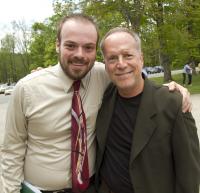 Hot off the presses, here’s an idea of what some members of the graduating class are doing: EVA BAISAN is teaching English for the Jett Program in Japan, and NICK COLLURA is working toward a master’s degree in social work at Smith College. ETHAN DENNY is working on the trail crew for the Randolph Mountain Club in New Hampshire. ANNIE MALAMET will be attending the School of Visual Studies in New York, while DEBORAH MEADOWS is a worker on Dog River Farm in Montpelier, Vermont. JACK ROSSITER-MUNLEY is a research assistant at MEM and Associates, in Illinois. JILLIAN O’CONNELL is a wardrobe supervisor at Shakespeare & Company in Massachusetts. ELLIE ROARK is the head RA at SOCAPA in Burlington, Vermont. ANDREW TANABE has an internship in Senator Leahy’s office in Washington, D.C. BRANDON WILLITTS is a trail worker for the National Park Service in California, and LESLIE WILSON is studying experimental psychology at Brooklyn College, New York. SHEA WITZBERGER is the assistant manager for the Brattleboro Farmer’s Market, working at Kindle Farm School and an assistant for Marlboro College summer programs. Finally, JONATHAN WOOD is in the MA in Teaching for Social Justice program at Marlboro College Graduate School.
Hot off the presses, here’s an idea of what some members of the graduating class are doing: EVA BAISAN is teaching English for the Jett Program in Japan, and NICK COLLURA is working toward a master’s degree in social work at Smith College. ETHAN DENNY is working on the trail crew for the Randolph Mountain Club in New Hampshire. ANNIE MALAMET will be attending the School of Visual Studies in New York, while DEBORAH MEADOWS is a worker on Dog River Farm in Montpelier, Vermont. JACK ROSSITER-MUNLEY is a research assistant at MEM and Associates, in Illinois. JILLIAN O’CONNELL is a wardrobe supervisor at Shakespeare & Company in Massachusetts. ELLIE ROARK is the head RA at SOCAPA in Burlington, Vermont. ANDREW TANABE has an internship in Senator Leahy’s office in Washington, D.C. BRANDON WILLITTS is a trail worker for the National Park Service in California, and LESLIE WILSON is studying experimental psychology at Brooklyn College, New York. SHEA WITZBERGER is the assistant manager for the Brattleboro Farmer’s Market, working at Kindle Farm School and an assistant for Marlboro College summer programs. Finally, JONATHAN WOOD is in the MA in Teaching for Social Justice program at Marlboro College Graduate School.
Letters
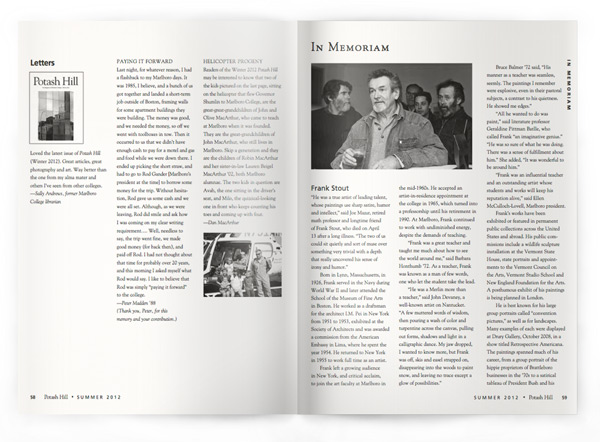
Loved the latest issue of Potash Hill (Winter 2012). Great articles, great photography and art. Way better than the one from my alma mater and others I’ve seen from other colleges. —Sally Andrews, former Marlboro College librarian
Paying it Forward
Last night, for whatever reason, I had a flashback to my Marlboro days. It was 1985, I believe, and a bunch of us got together and landed a short-term job outside of Boston, framing walls for some apartment buildings they were building. The money was good, and we needed the money, so off we went with toolboxes in tow. Then it occurred to us that we didn’t have enough cash to pay for a motel and gas and food while we were down there. I ended up picking the short straw, and had to go to Rod Gander [Marlboro’s president at the time] to borrow some money for the trip. Without hesitation, Rod gave us some cash and we were all set. Although, as we were leaving, Rod did smile and ask how I was coming on my clear writing requirement…. Well, needless to say, the trip went fine, we made good money (for back then), and paid off Rod. I had not thought about that time for probably over 20 years, and this morning I asked myself what Rod would say. I like to believe that Rod was simply “paying it forward” to the college.
—Peter Madden ’88
(Thank you, Peter, for this memory and your contribution.)
Helicopter Progeny
Readers of the Winter 2012 Potash Hill may be interested to know that two of the kids pictured on the last page, sitting on the helicopter that flew Governor Shumlin to Marlboro College, are the great-great-grandchildren of John and Olive MacArthur, who came to teach at Marlboro when it was founded. They are the great-grandchildren of John MacArthur, who still lives in Marlboro. Skip a generation and they are the children of Robin MacArthur and her sister-in-law Lauren Beigel MacArthur ’02, both Marlboro alumnae. The two kids in question are Avah, the one sitting in the driver’s seat, and Milo, the quizzical-looking one in front who keeps counting his toes and coming up with four.
—Dan MacArthur
In Memoriam
Frank Stout “He was a true artist of leading talent, whose paintings use sharp satire, humor and intellect,” said Joe Mazur, retired math professor and longtime friend of Frank Stout, who died on April 13 after a long illness. “The two of us could sit quietly and sort of muse over something very trivial with a depth that really uncovered his sense of irony and humor.”
“He was a true artist of leading talent, whose paintings use sharp satire, humor and intellect,” said Joe Mazur, retired math professor and longtime friend of Frank Stout, who died on April 13 after a long illness. “The two of us could sit quietly and sort of muse over something very trivial with a depth that really uncovered his sense of irony and humor.”
Born in Lynn, Massachusetts, in 1926, Frank served in the Navy during World War II and later attended the School of the Museum of Fine Arts in Boston. He worked as a draftsman for the architect I.M. Pei in New York from 1951 to 1953, exhibited at the Society of Architects and was awarded a commission from the American Embassy in Lima, where he spent the year 1954. He returned to New York in 1955 to work full time as an artist.
Frank left a growing audience in New York, and critical acclaim, to join the art faculty at Marlboro in the mid-1960s. He accepted an artist-in-residence appointment at the college in 1965, which turned into a professorship until his retirement in 1990. At Marlboro, Frank continued to work with undiminished energy, despite the demands of teaching.
“Frank was a great teacher and taught me much about how to see the world around me,” said Barbara Honthumb ’72. As a teacher, Frank was known as a man of few words, one who let the student take the lead.
“He was a Merlin more than a teacher,” said John Devaney, a well-known artist on Nantucket. “A few muttered words of wisdom, then pouring a wash of color and turpentine across the canvas, pulling out forms, shadows and light in a calligraphic dance. My jaw dropped, I wanted to know more, but Frank was off, skis and easel strapped on, disappearing into the woods to paint snow, and leaving no trace except a glow of possibilities.”
Bruce Balmer ’72 said, “His manner as a teacher was seamless, seemly. The paintings I remember were explosive, even in their pastoral subjects, a contrast to his quietness. He showed me edges.”
“All he wanted to do was paint,” said literature professor Geraldine Pittman Batlle, who called Frank “an imaginative genius.” “He was so sure of what he was doing. There was a sense of fulfillment about him.” She added, “It was wonderful to be around him.”
“Frank was an influential teacher and an outstanding artist whose students and works will keep his reputation alive,” said Ellen McCulloch-Lovell, Marlboro president.
Frank’s works have been exhibited or featured in permanent public collections across the United States and abroad. His public commissions include a wildlife sculpture installation at the Vermont State House, state portraits and appointments to the Vermont Council on the Arts, Vermont Studio School and New England Foundation for the Arts. A posthumous exhibit of his paintings is being planned in London.
He is best known for his large group portraits called “convention pictures,” as well as for landscapes. Many examples of each were displayed at Drury Gallery, October 2008, in a show titled Retrospective Americana. The paintings spanned much of his career, from a group portrait of the hippie proprietors of Brattleboro businesses in the ’70s to a satirical tableau of President Bush and his cabinet crossing the Tigris River. All of the pieces were a tribute to Frank’s gently comical worldview.
“Frank Stout’s works win you over in two ways,” said Marlboro art professor Tim Segar. “First, by being curious and witty situations and places. Second, by being gorgeous paintings whose marks and surfaces are full of wonderful touches and colors. The real success of them is that neither their subject nor their formal quality overwhelms the other. Both halves work equally to make great painting.”
Frank is survived by his daughter, writer Mira Stout.
Maurice Pechet, former trustee
Maurice Pechet, of Cambridge, Massachusetts, highly regarded teacher, physician, scientist and longtime trustee of Marlboro College, died on March 5. He was 94 years old. Originally from a trading post in Saskatchewan, Canada, he spent 70 years at Harvard University, earning a Ph.D. in chemistry in 1944 and an M.D. in 1948, and devoting the rest of his career to teaching and science. He served on Marlboro’s board of trustees for 37 years, starting in 1963.
“Maurice was a kind, purposeful guide for a young dean of students at Marlboro College in the 1960s,” said Ted Wendell, trustee and former math professor and dean. “As one of Marlboro’s longest-serving trustees, Maurice took time with members of the college administration and faculty to share the wisdom accumulated over his time as a senior tutor in Lowell House at Harvard.”
Maurice held a number of posts on the faculty at Harvard University and Harvard Medical School, and cared for patients at Massachusetts General Hospital for more than half a century. As a scientist, he published over 100 papers and contributed many new synthetic processes.
“Maurice was a physician, a chemist, a noted researcher who was once nominated for the Nobel Prize and a teacher all in one,’’ said Tom Ragle, retired president of Marlboro College. “He understood students better than anyone I ever knew, even while he was engaged in highlevel, esoteric research. He was not simply a teacher, he was an adviser, often for life.’’
An active philanthropist and supporter of the arts, Maurice was also a board member and patron of the Marlboro Music School. He was an advocate of the symbiotic interaction between the two institutions and celebrated the academic integrity of each.
“Maurice was an enduring friend of the college,” said Ellen McCulloch-Lovell, Marlboro president. “He had a special attachment to our ongoing tradition of hosting a classics fellow from Oxford University to teach Latin and Greek here, and was steadfast in supporting that program.”
“Maurice was always generous to the college, often opening his home for gatherings that introduced the college to potential friends of Marlboro,” said Ted. “But most of all, I remember Maurice’s smile—a smile that lit up his face and warmed the insides of anyone in his presence.”
Maurice is survived by his wife, Kitty, and his sons, Tiron, Taine, Tavan and Tamin.
Thomas Anderson, former dean of students
On June 1, Tom Anderson died at his home in Petersham, Massachusetts, at the age of 63, from recurrent prostate cancer. A believer in lifelong learning, Tom earned a master’s in religion and society from the Pacific School of Religion and a master’s in social ethics from Boston University. He served as dean of students at Manhattanville College and associate dean of students at Clark University before coming to Marlboro, where he was dean of students from 1989 to 1993 and taught religious studies and social ethics. Diagnosed with cancer in 1992, he made a deliberate change to his life’s work and earned a master’s in library science from Simmons College. For 16 years he was librarian at Oakmont Regional High School in Ashburnham, Massachusetts, nearly until his death. Tom loved nature, literature and music, and was outspoken about environmental causes, social justice and ethical politics.
Tom is survived by his wife, Candace, daughter Emily and son Barrett.
Parting Shot
While waiting for the students to line up for commencement, the faculty broke into a spontaneous, if not entirely graceful, bit of contra dancing. For more, see http://youtu.be/-70ZqGsLnfc. Photo by Alek Jaunzemis
